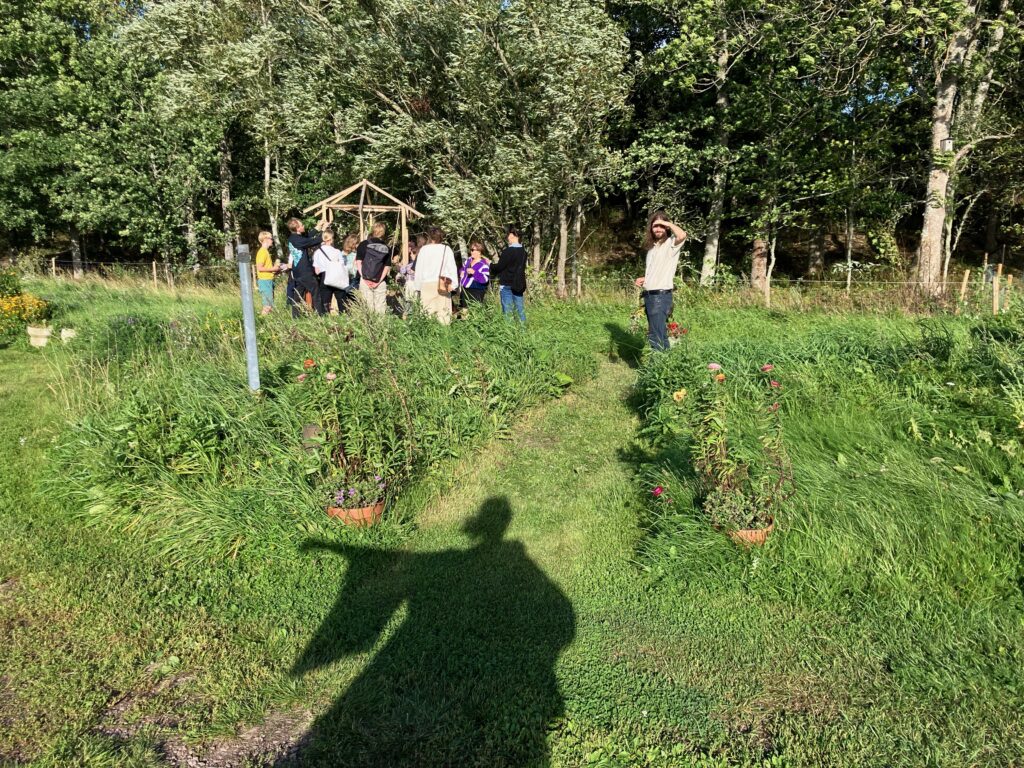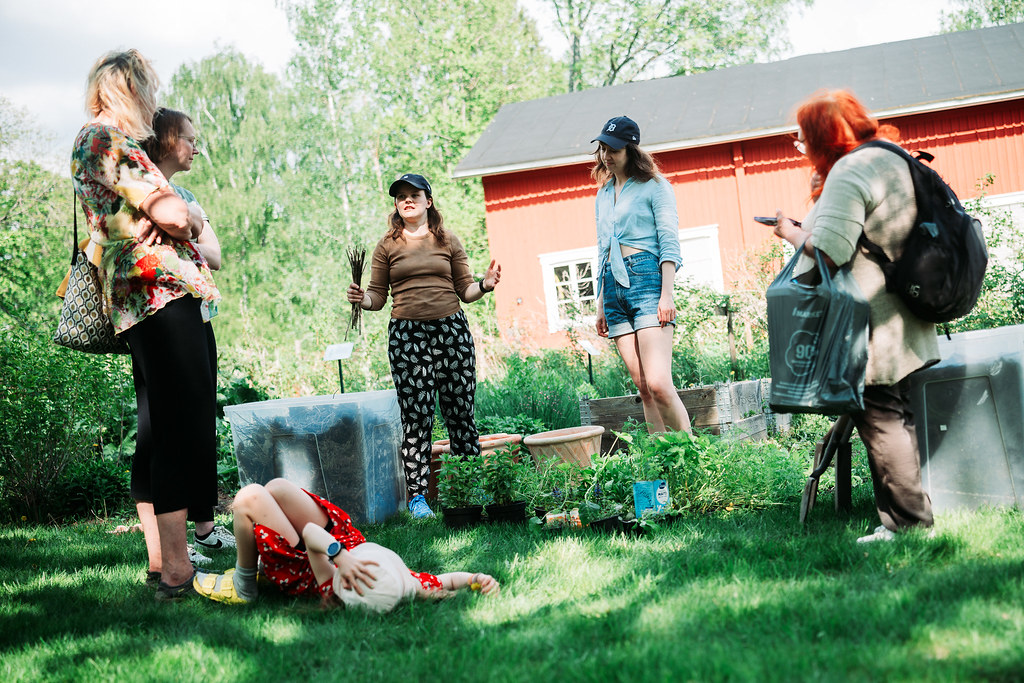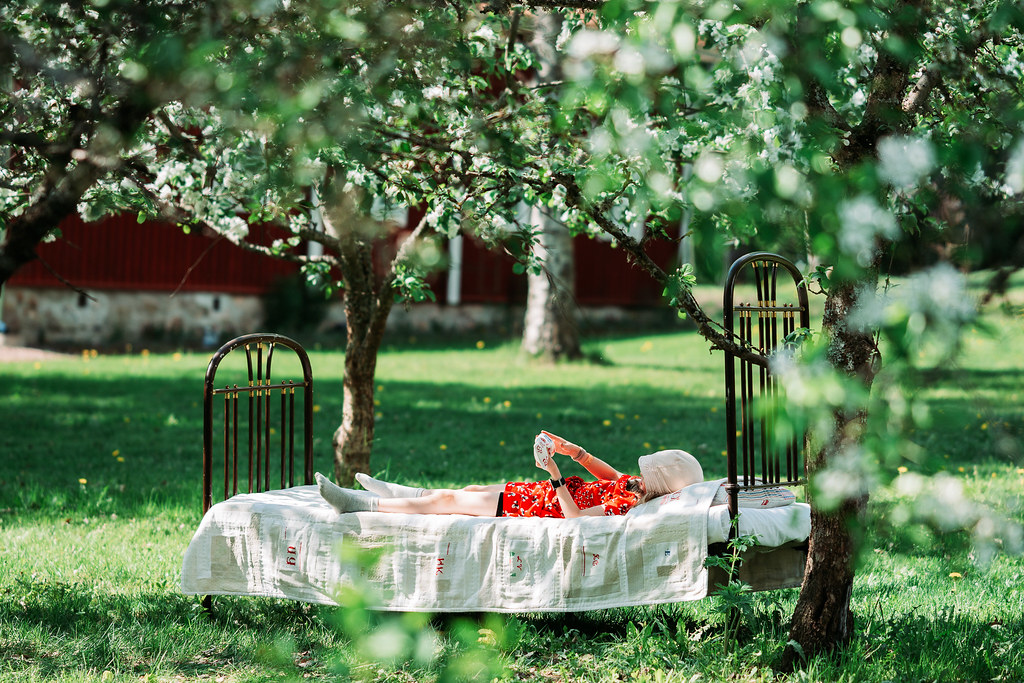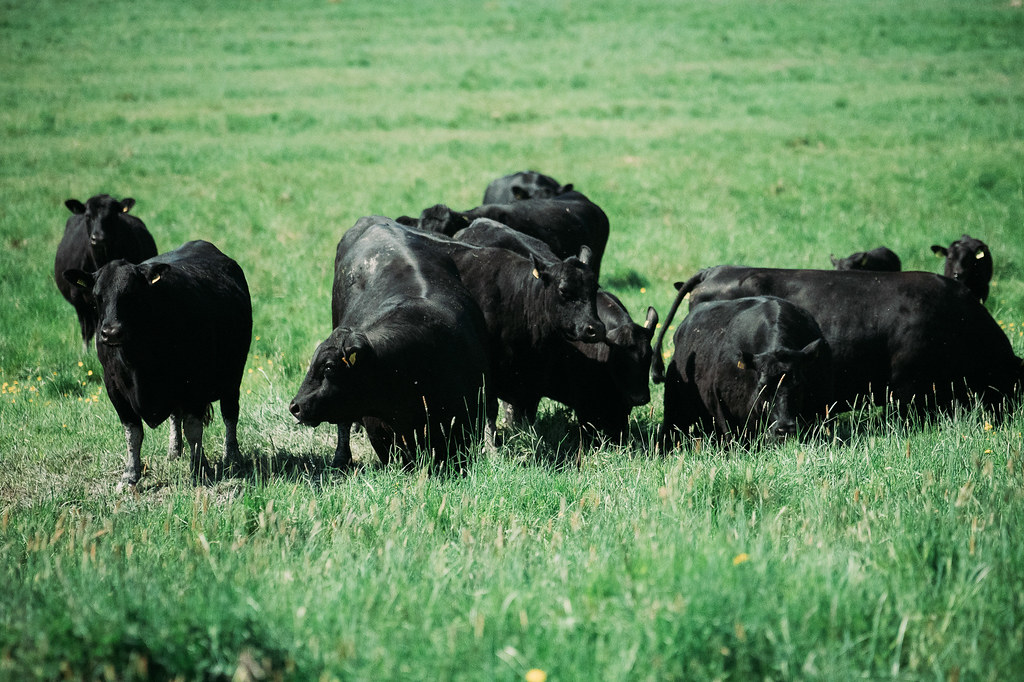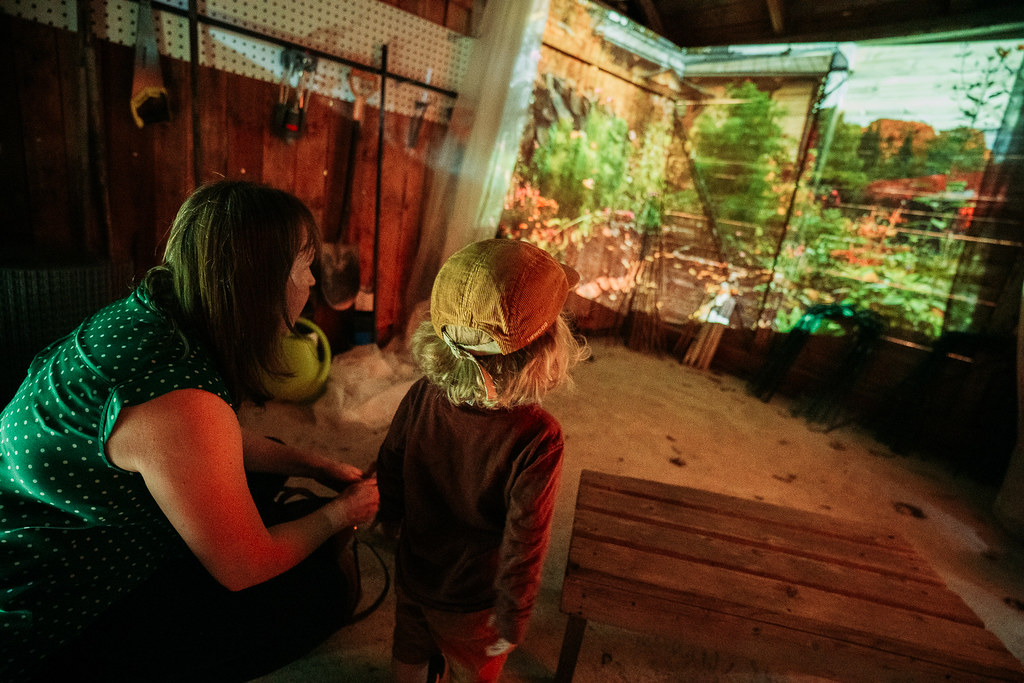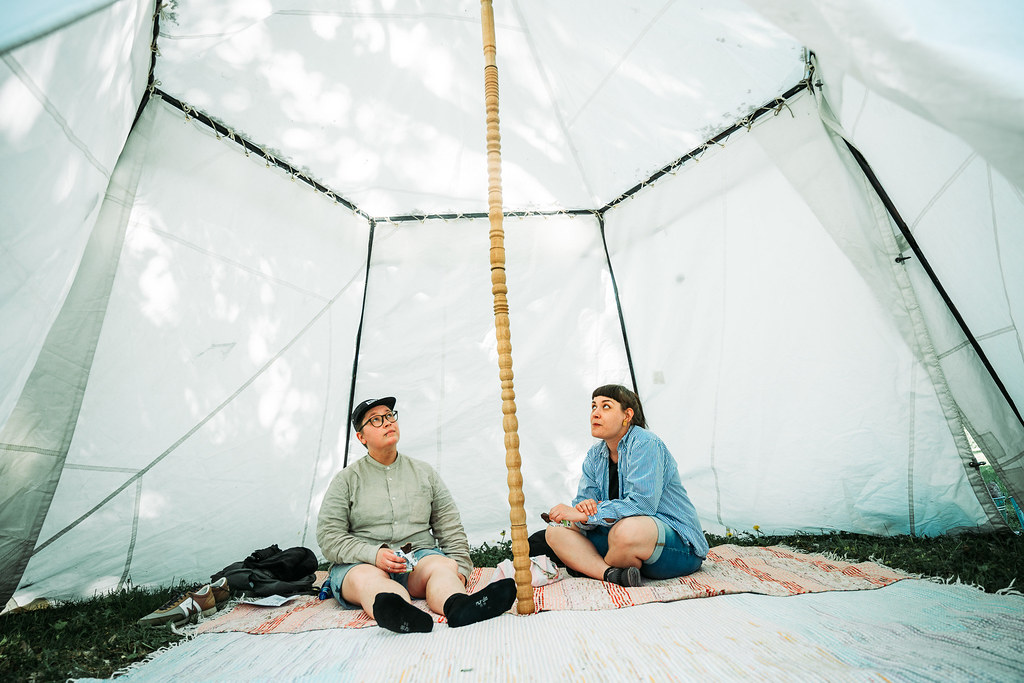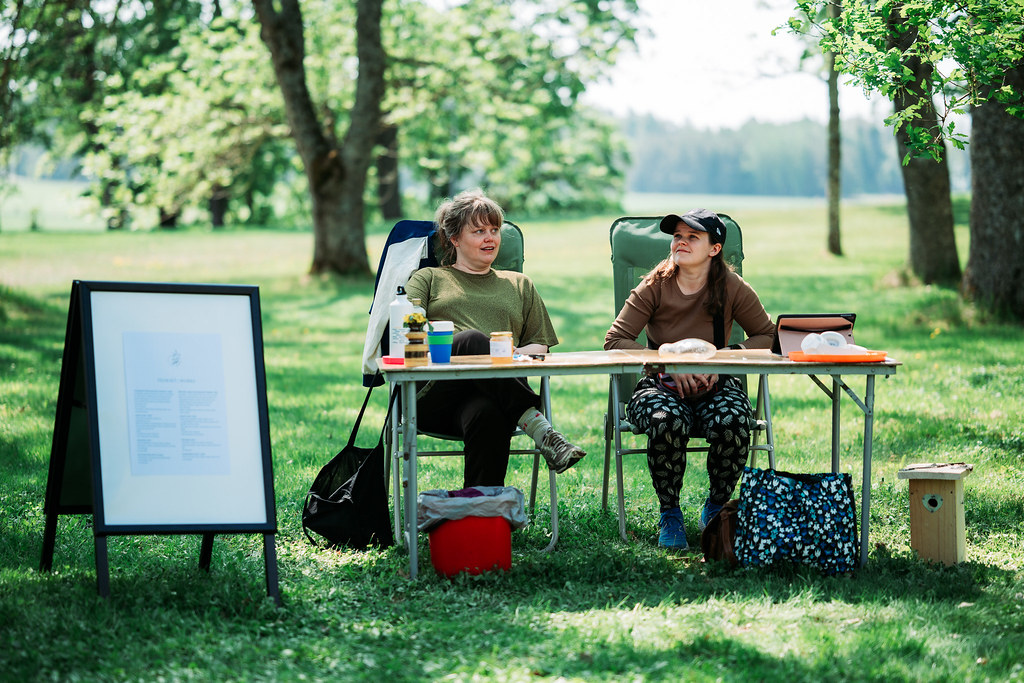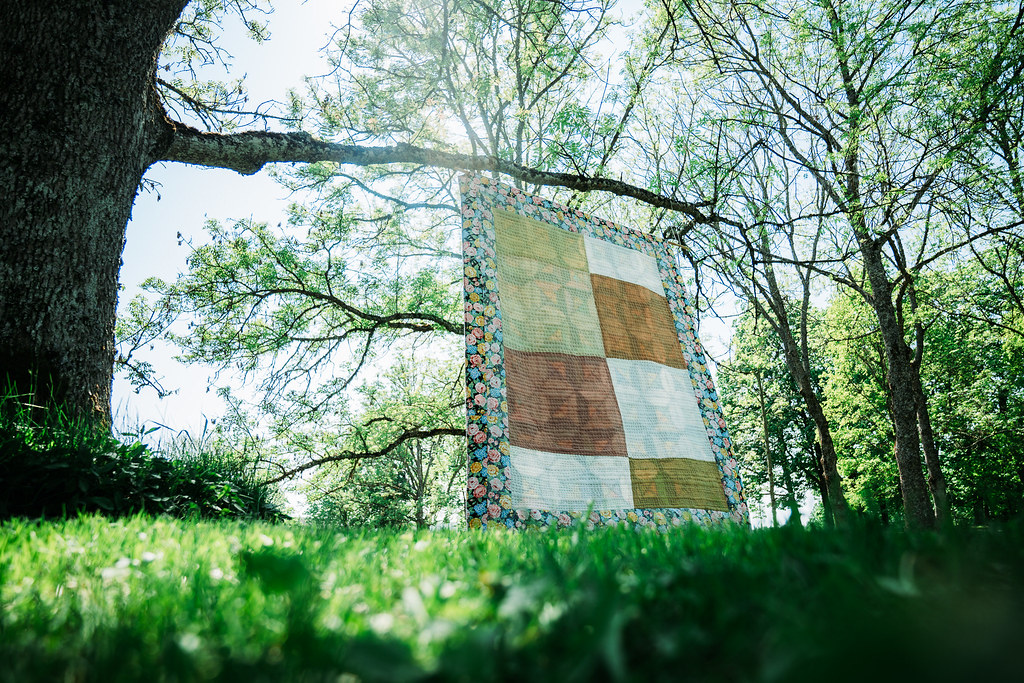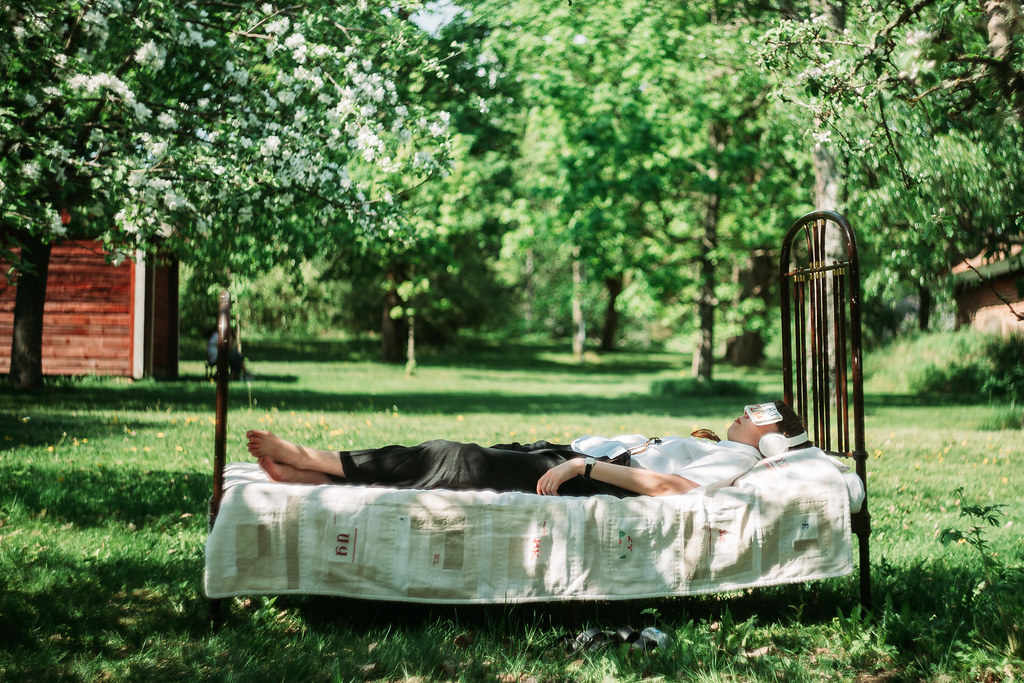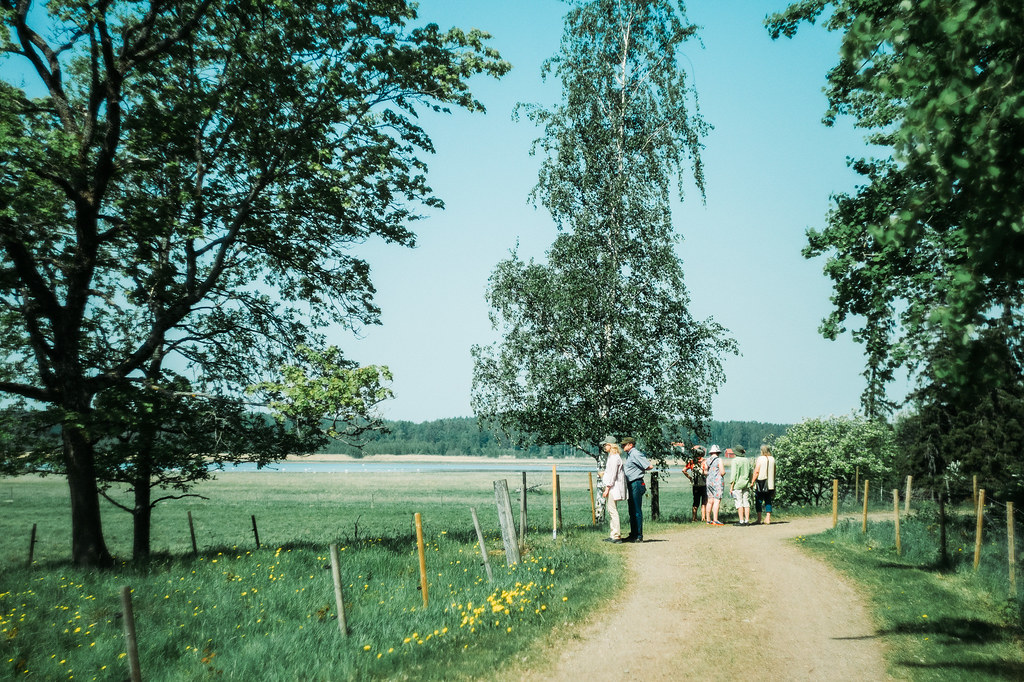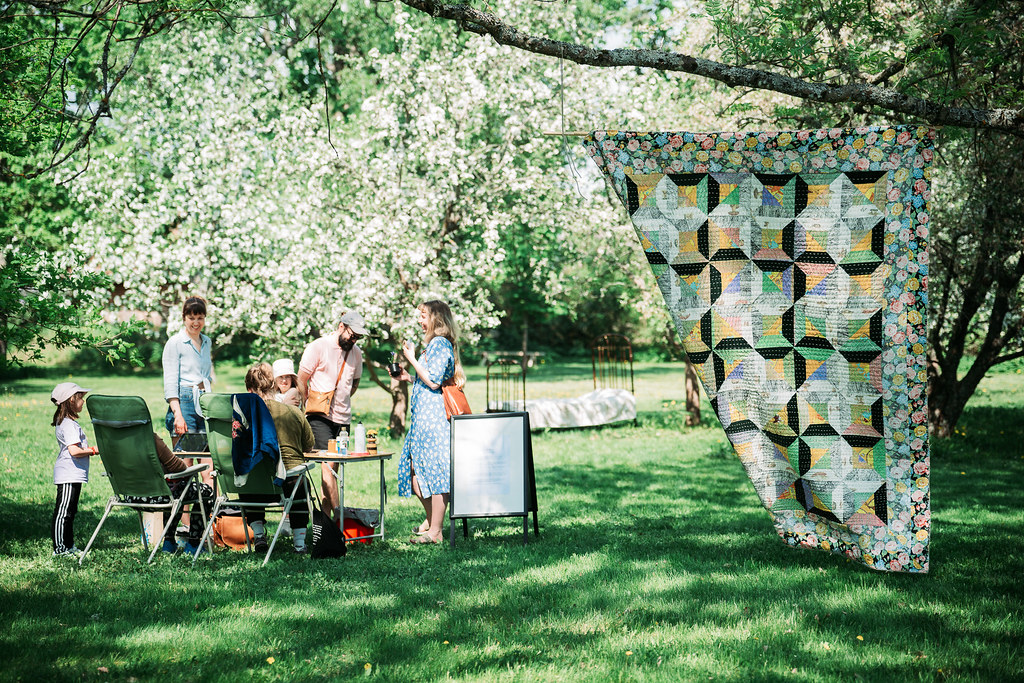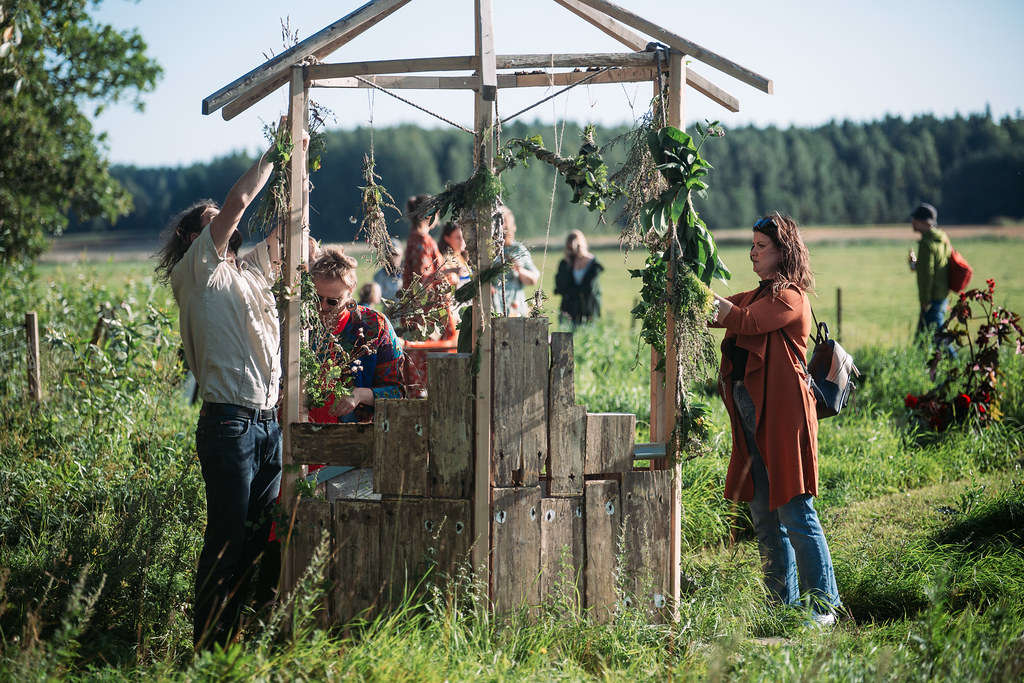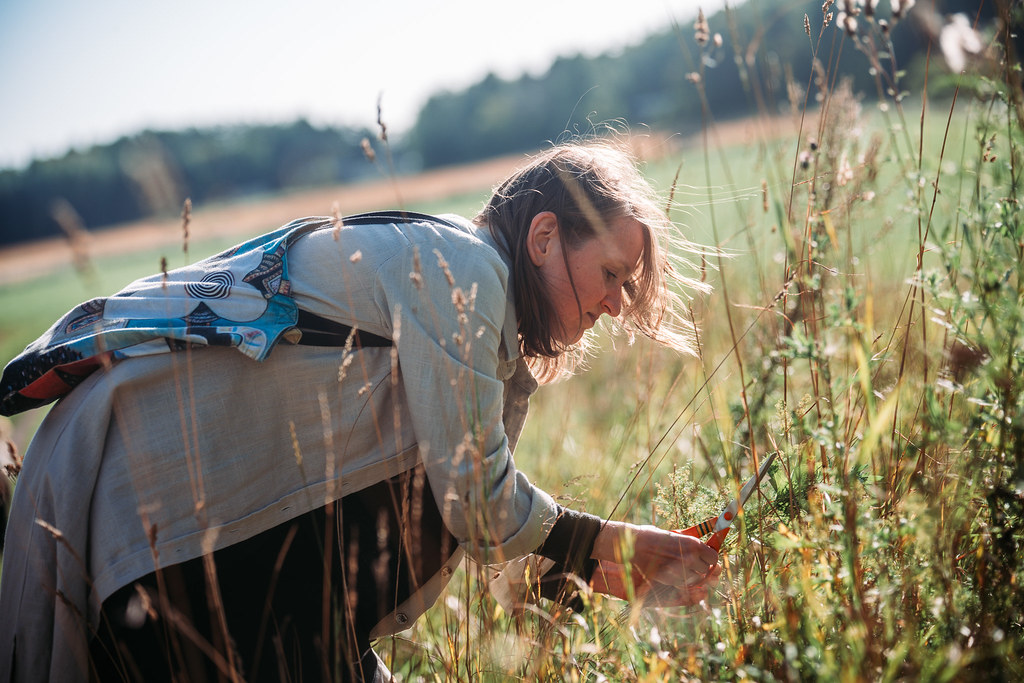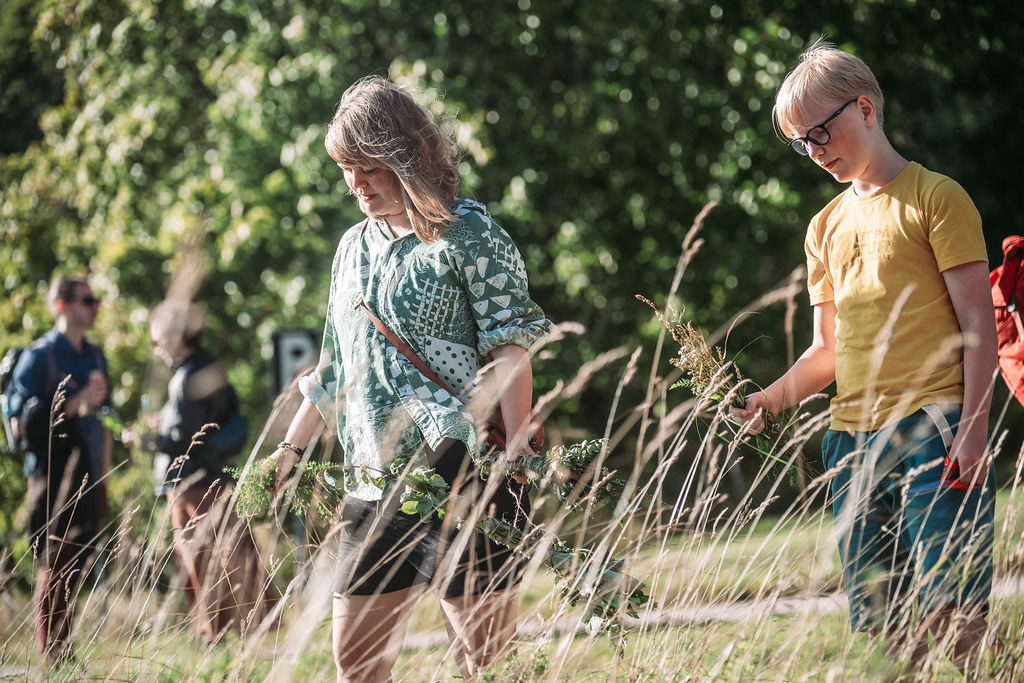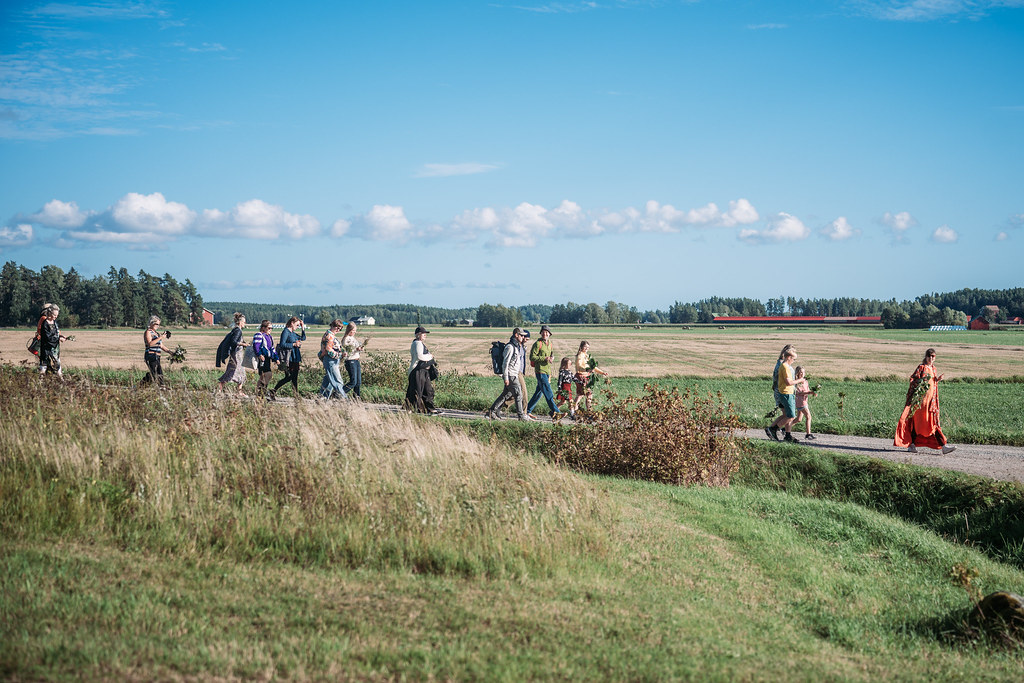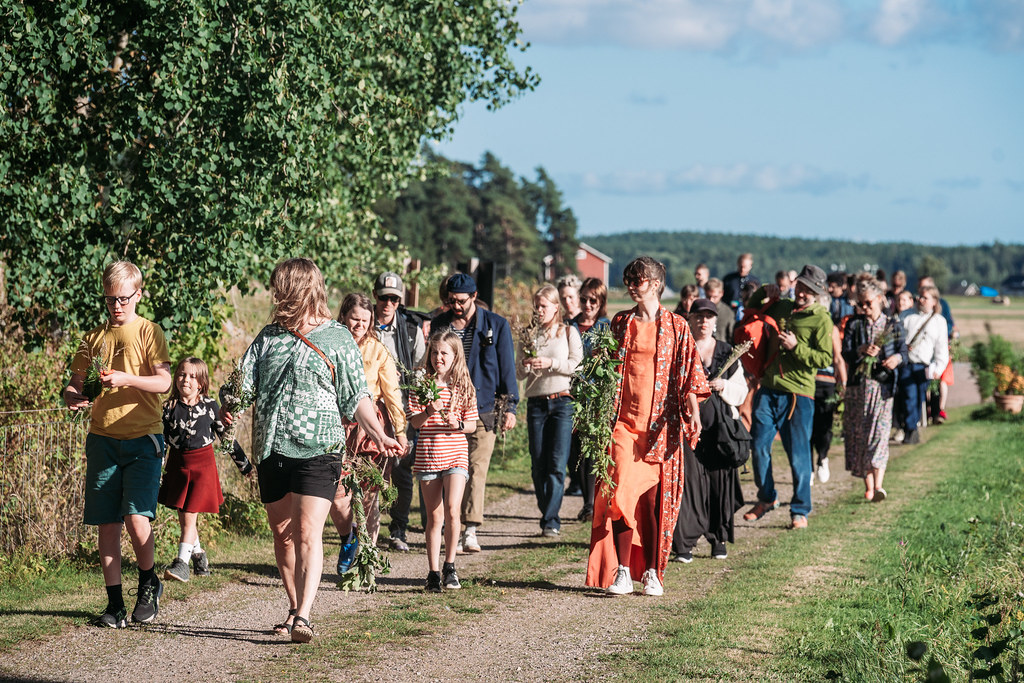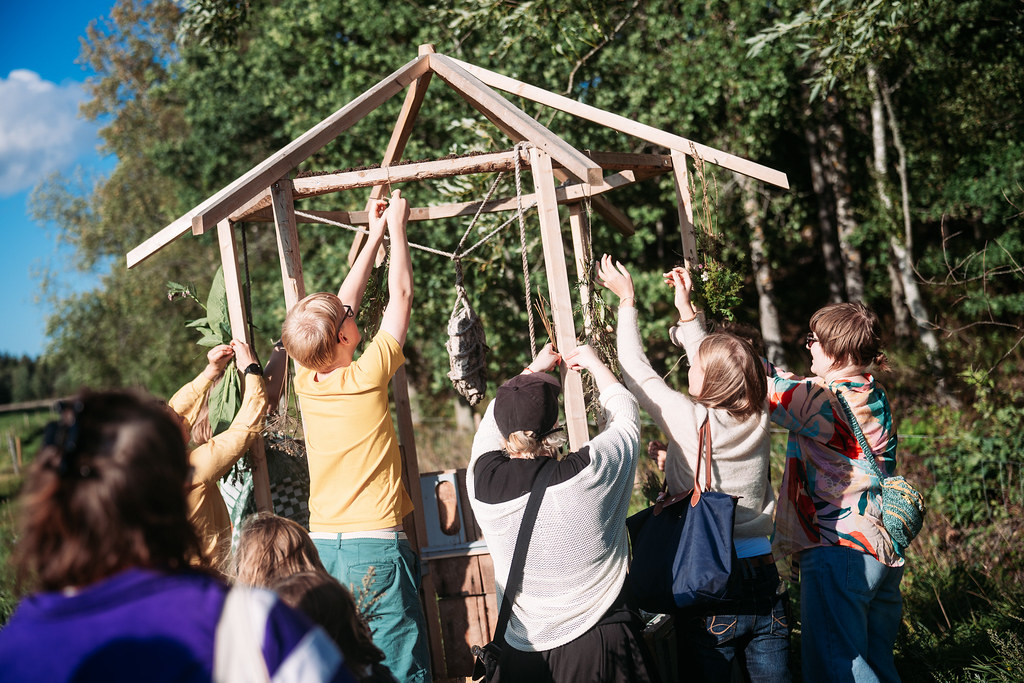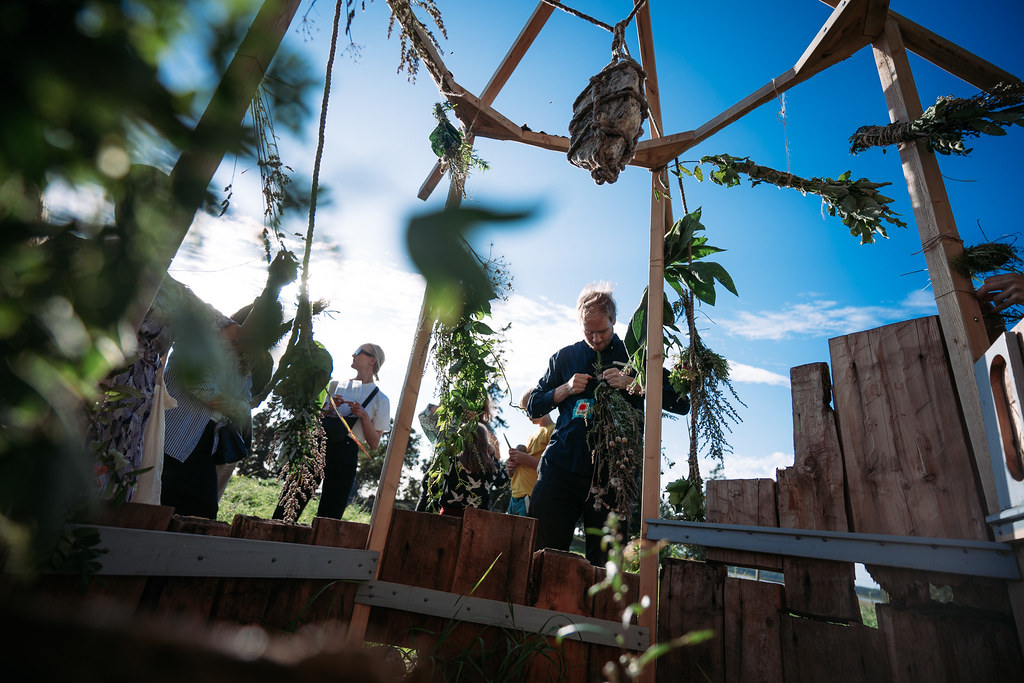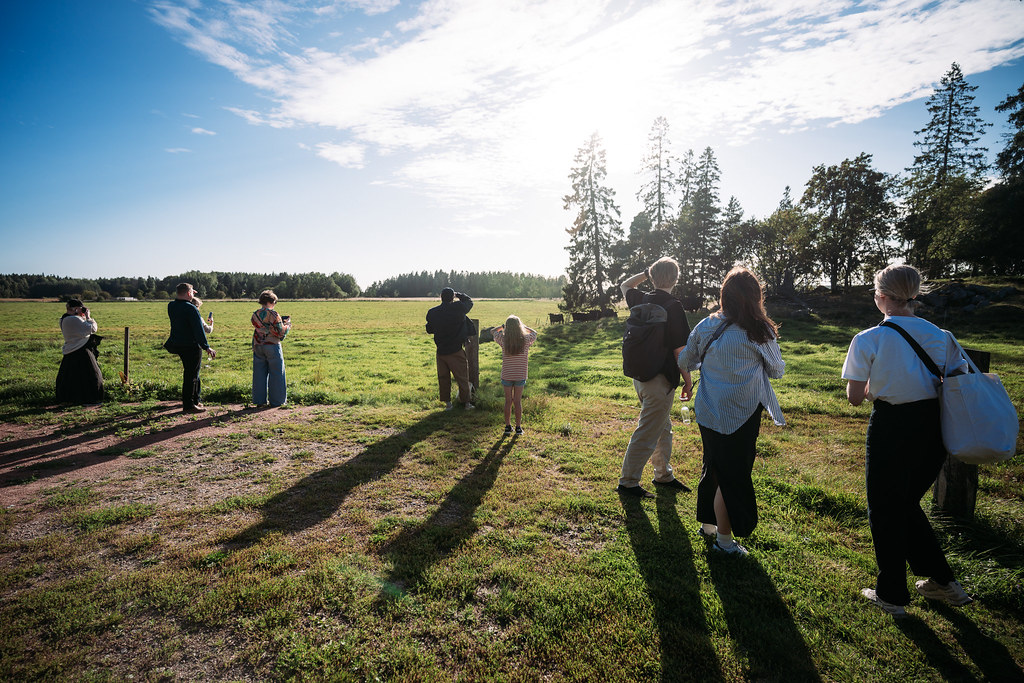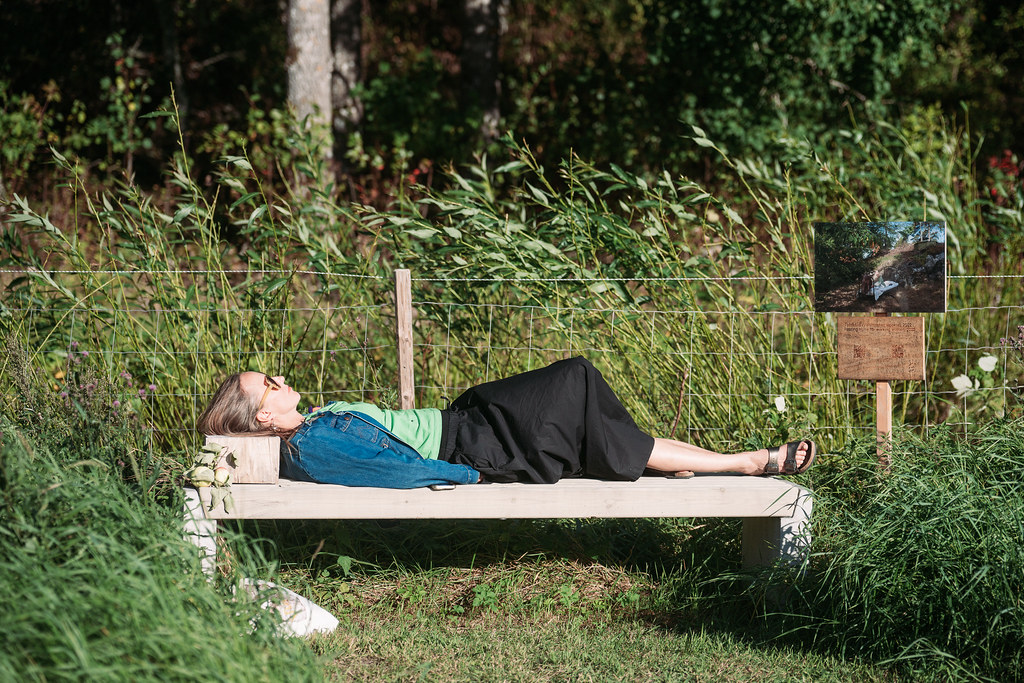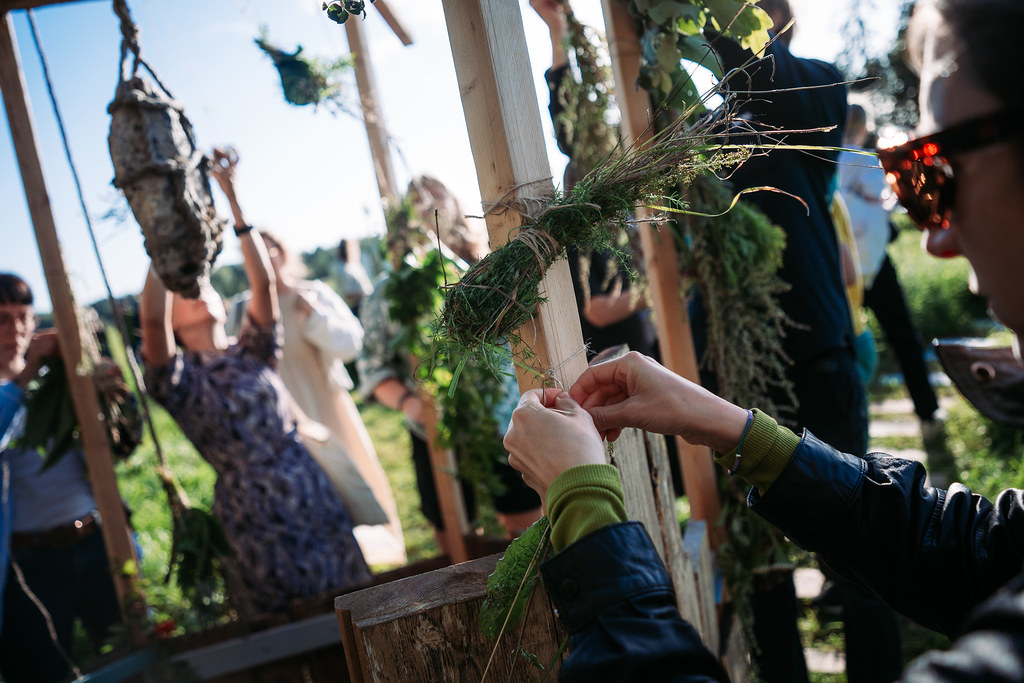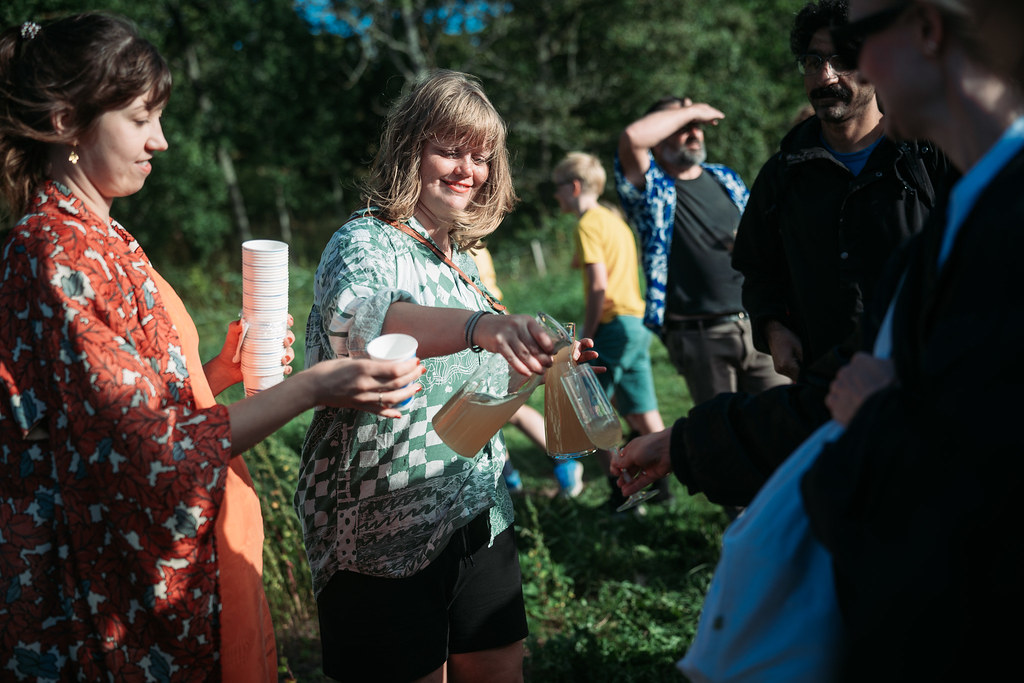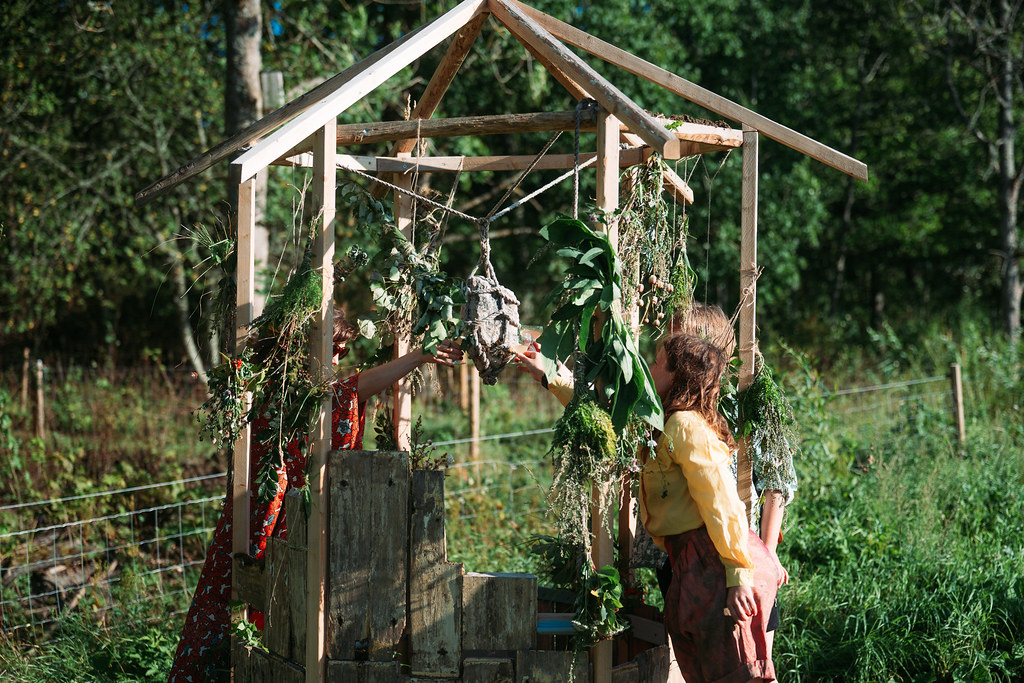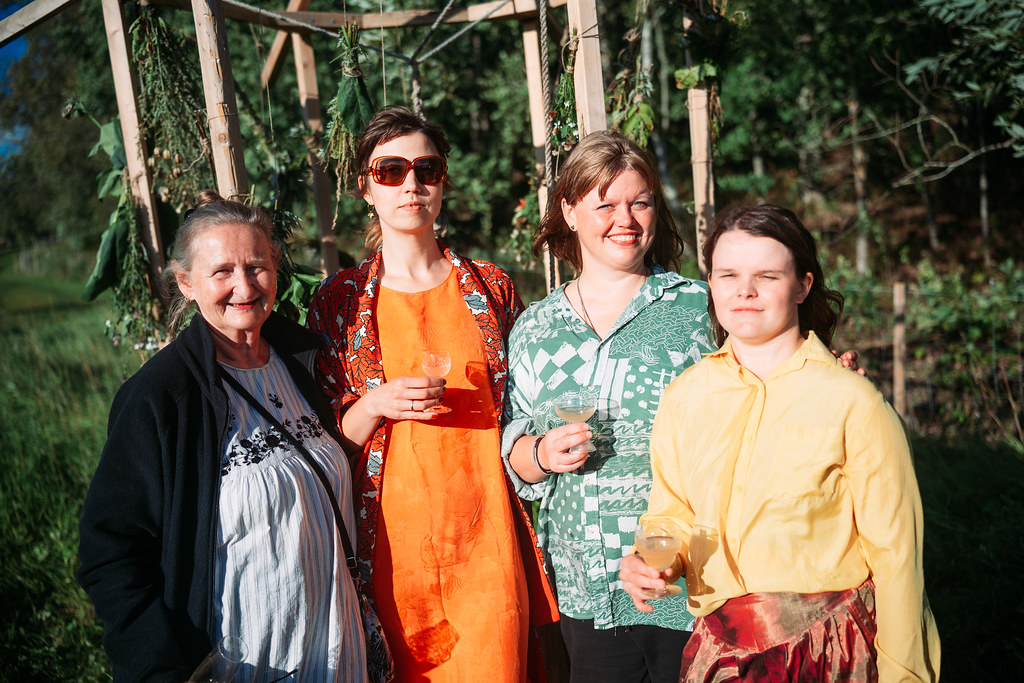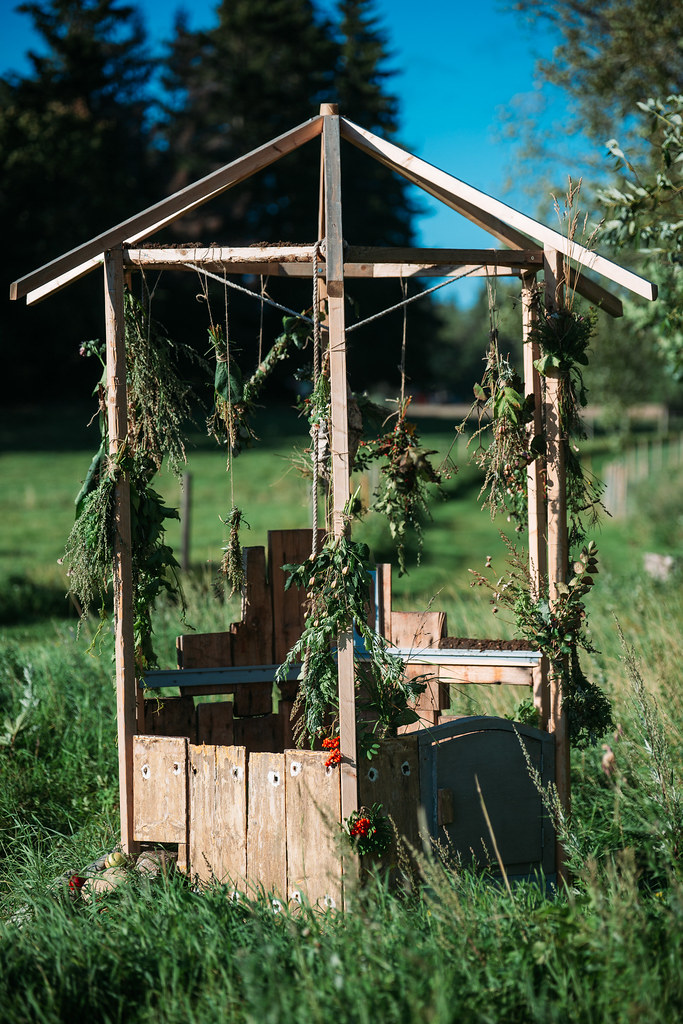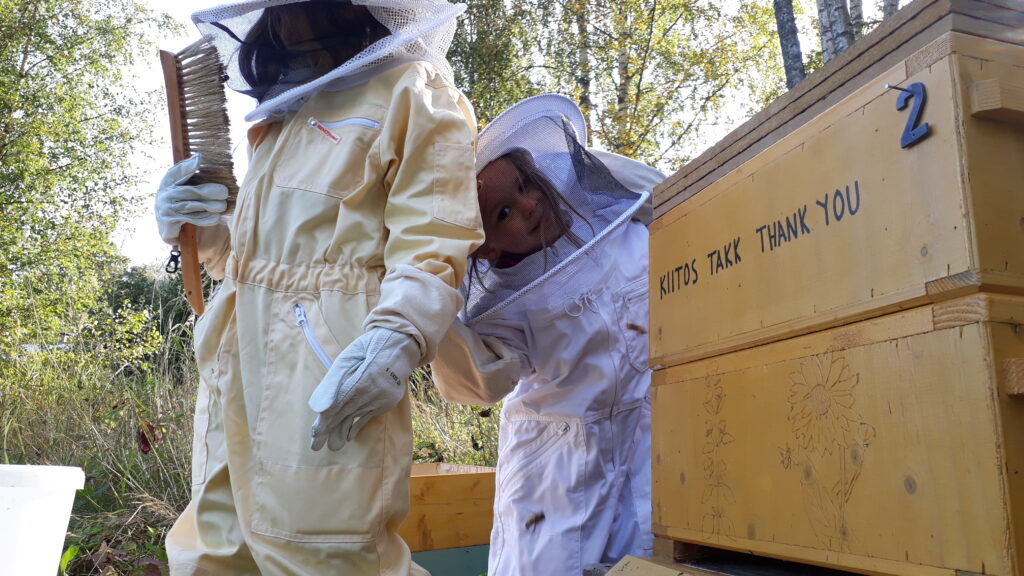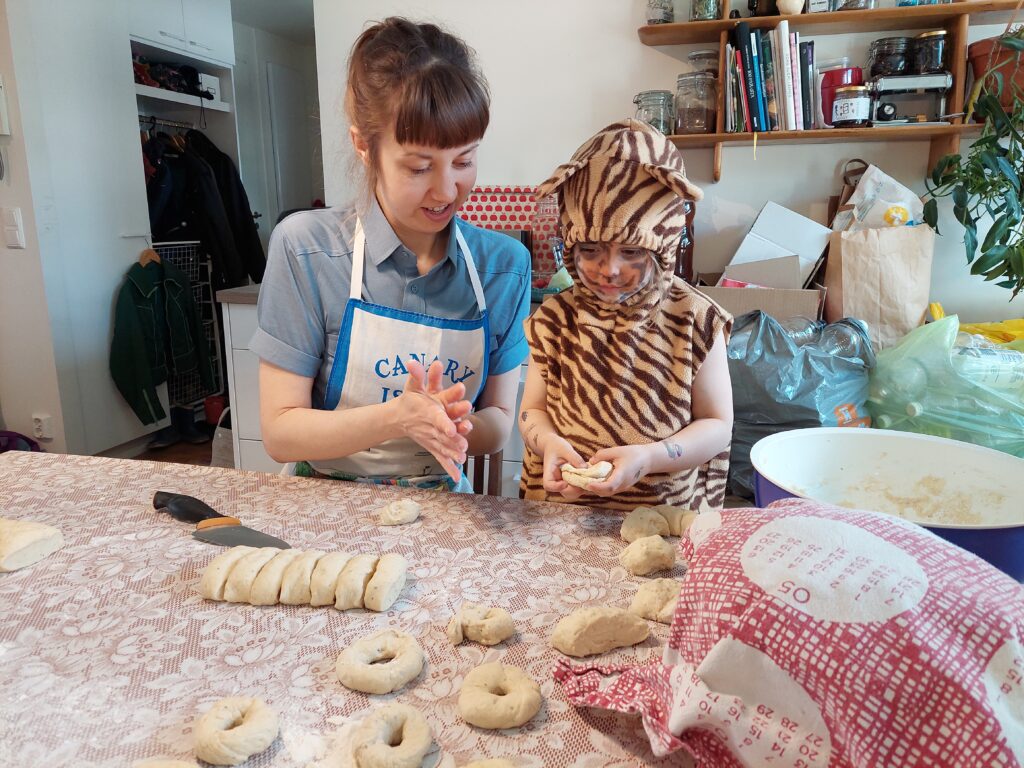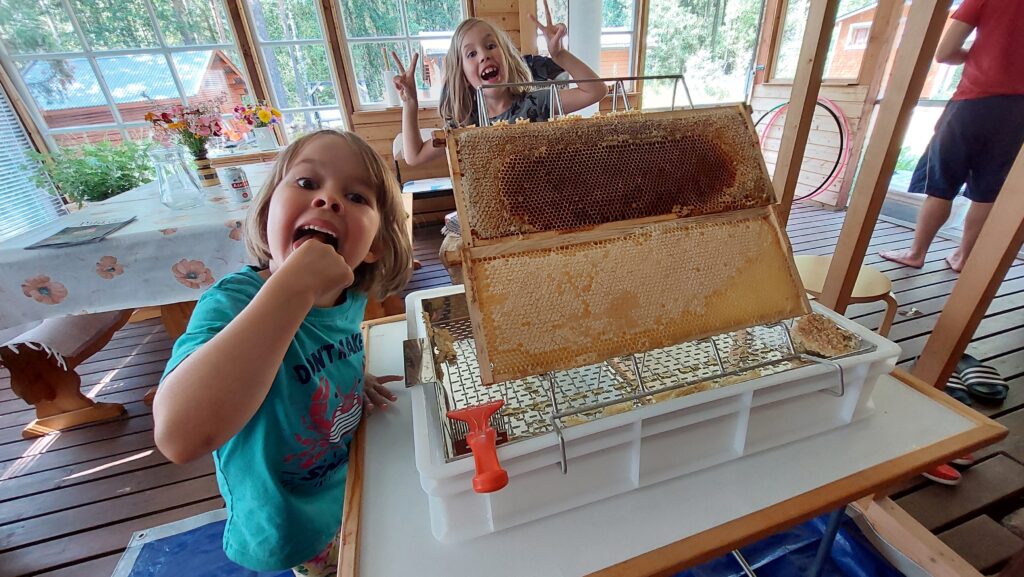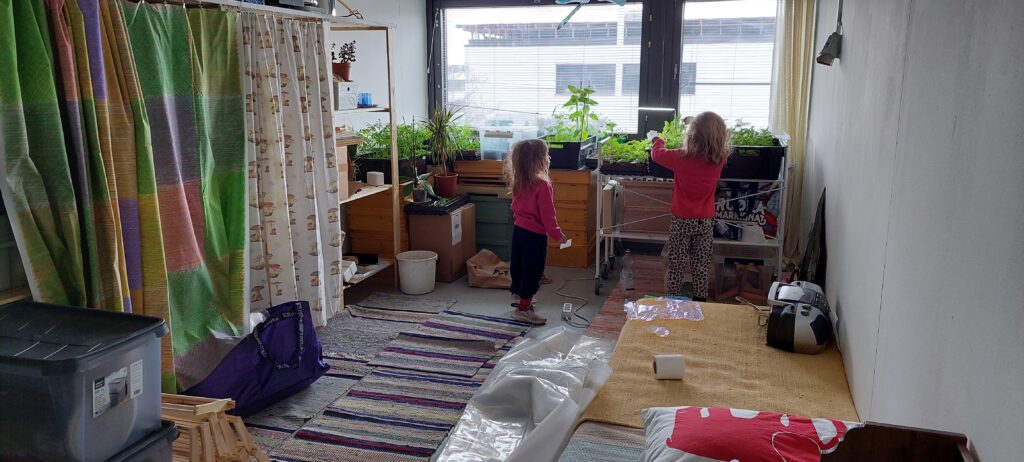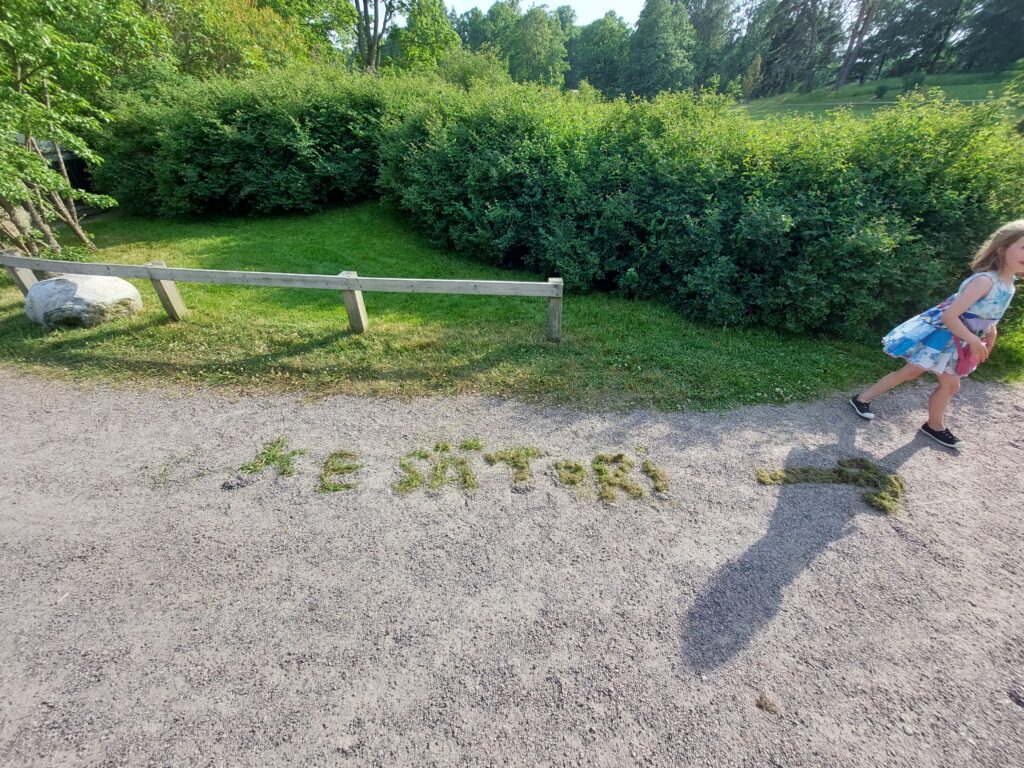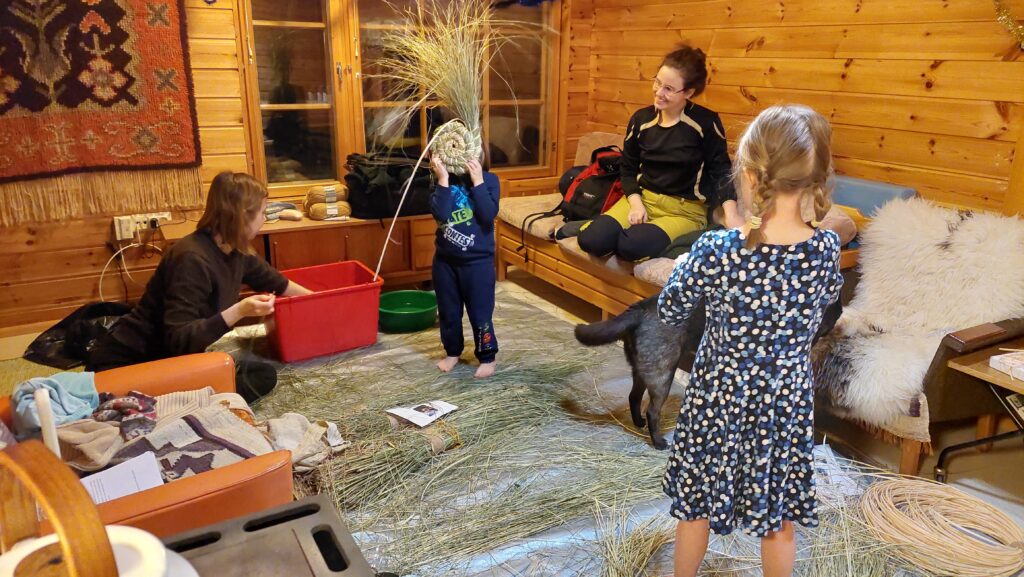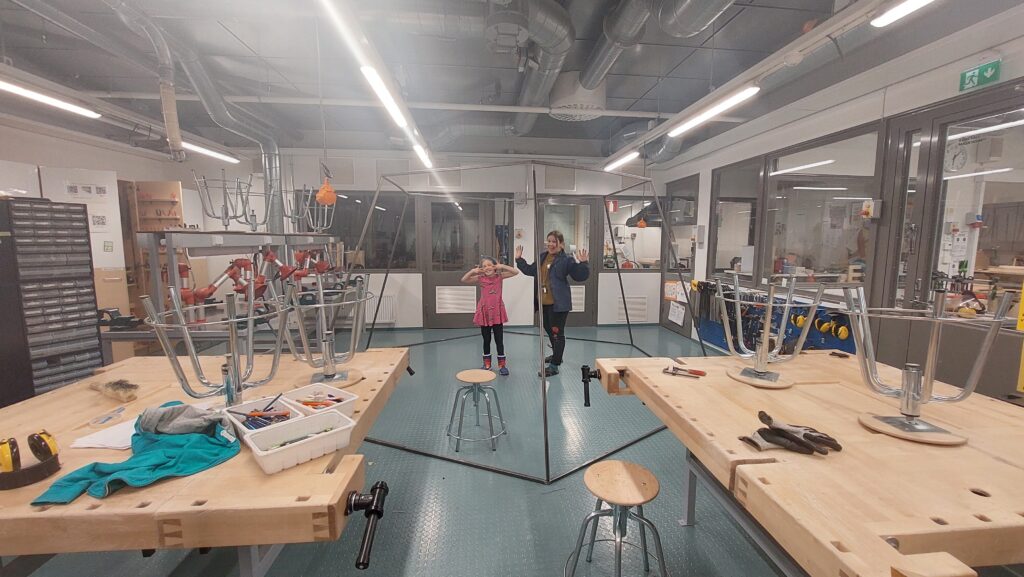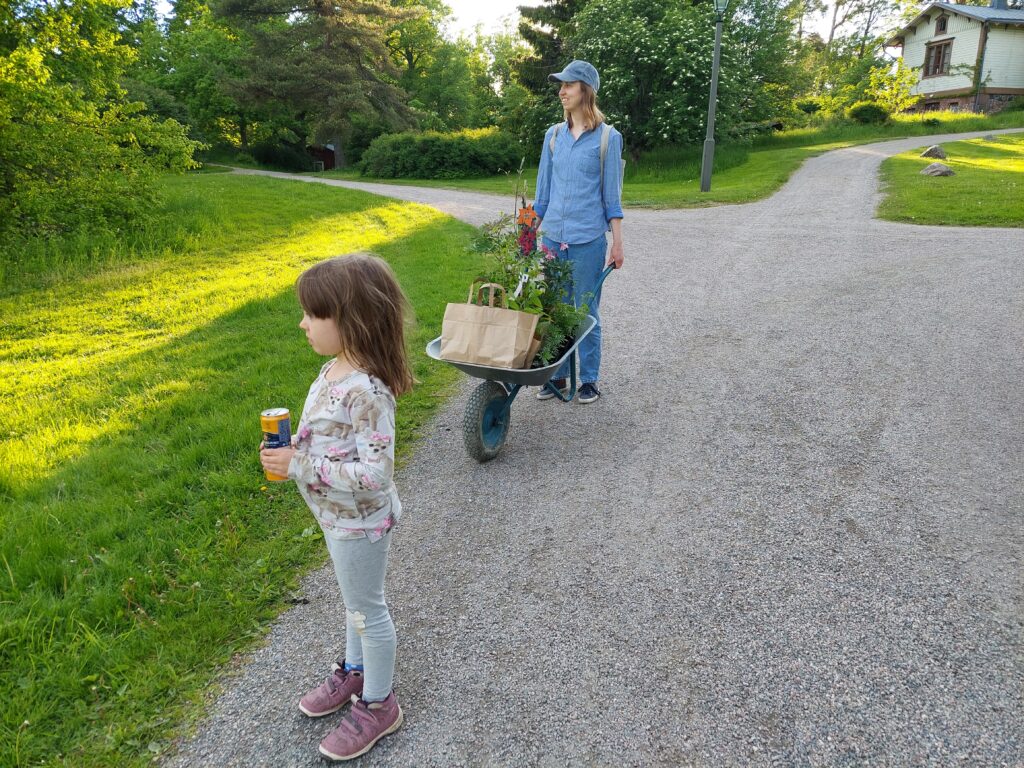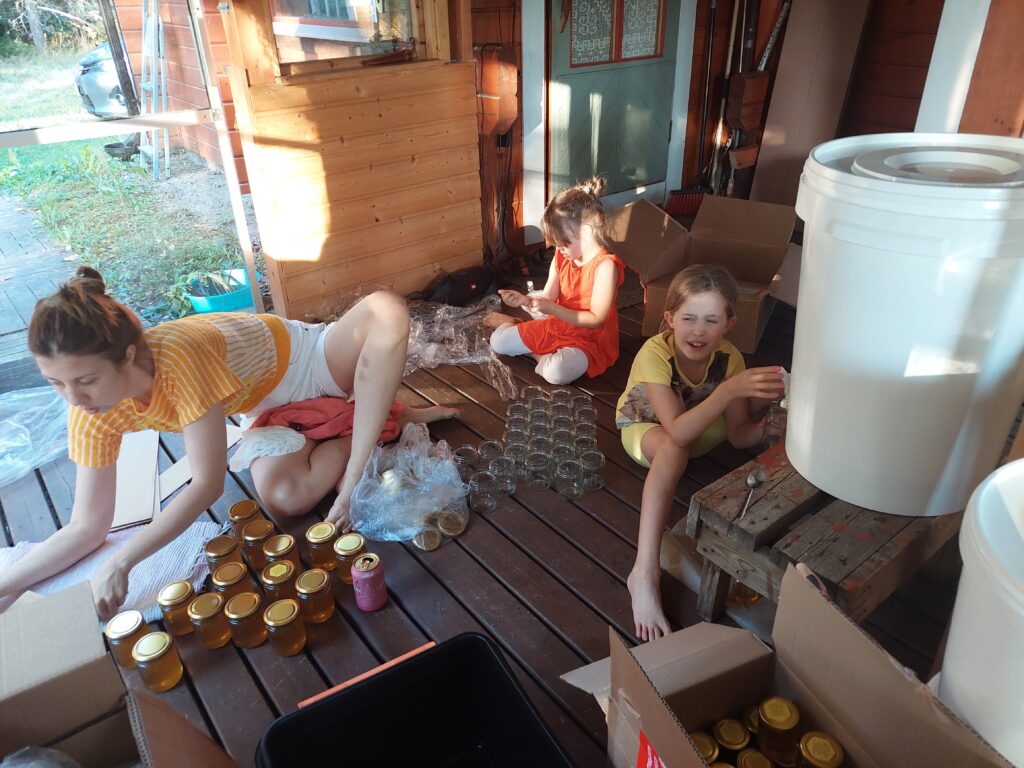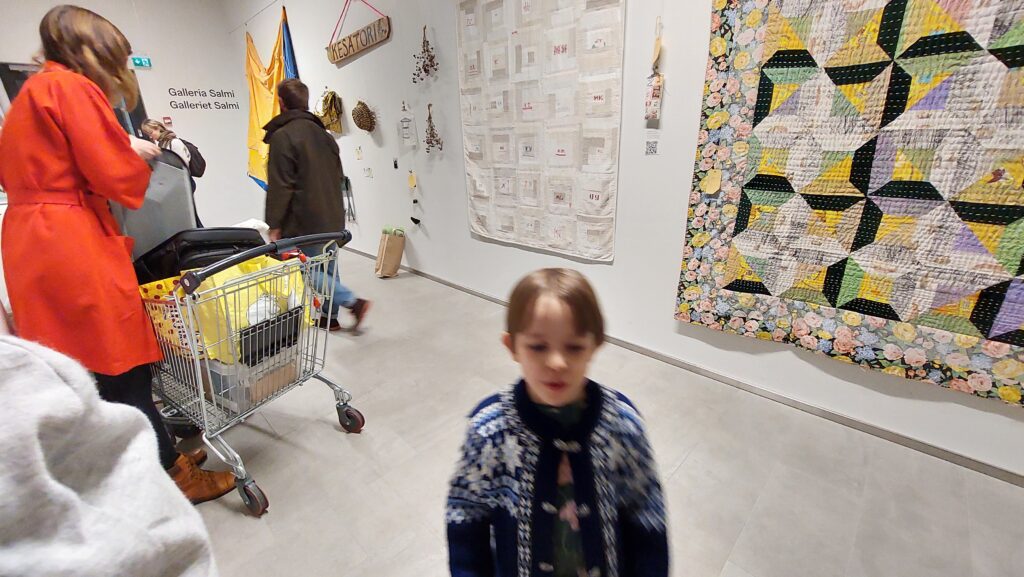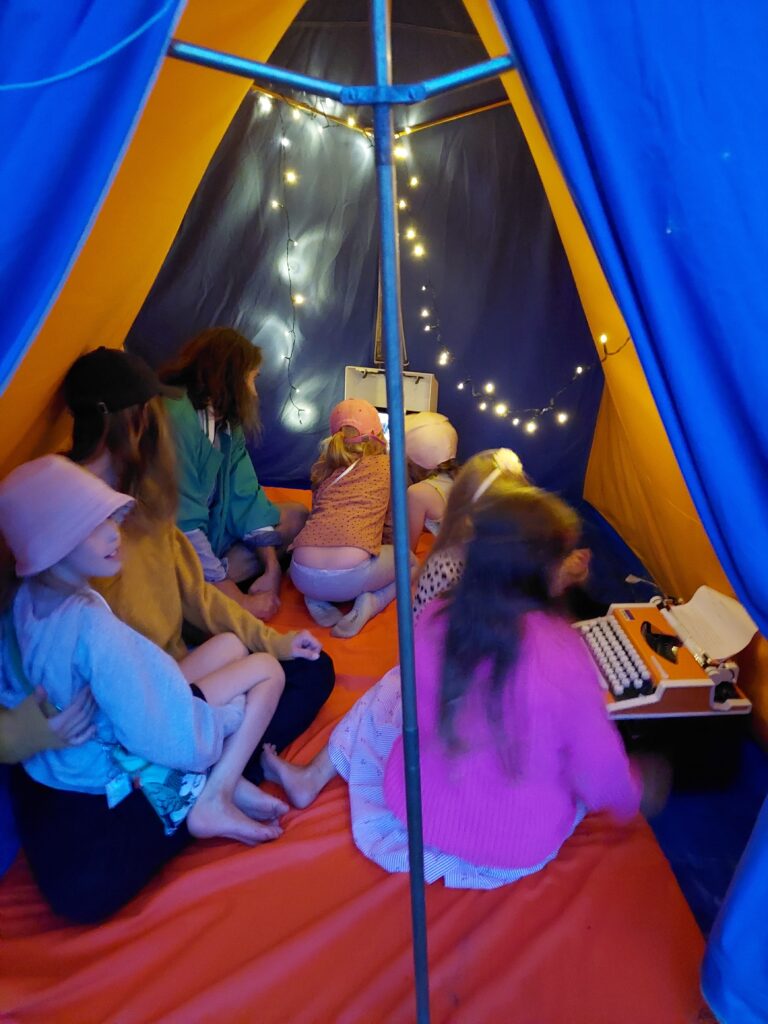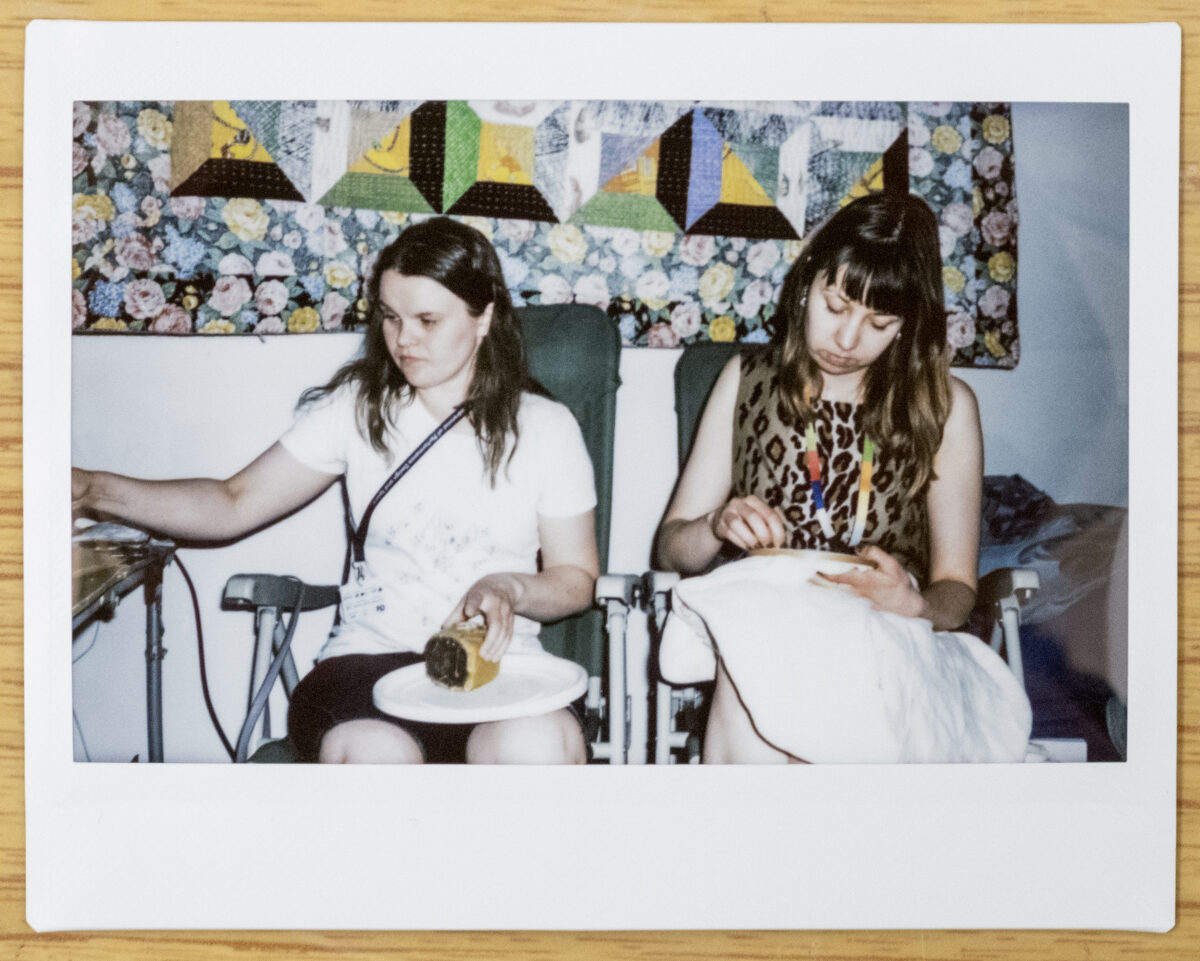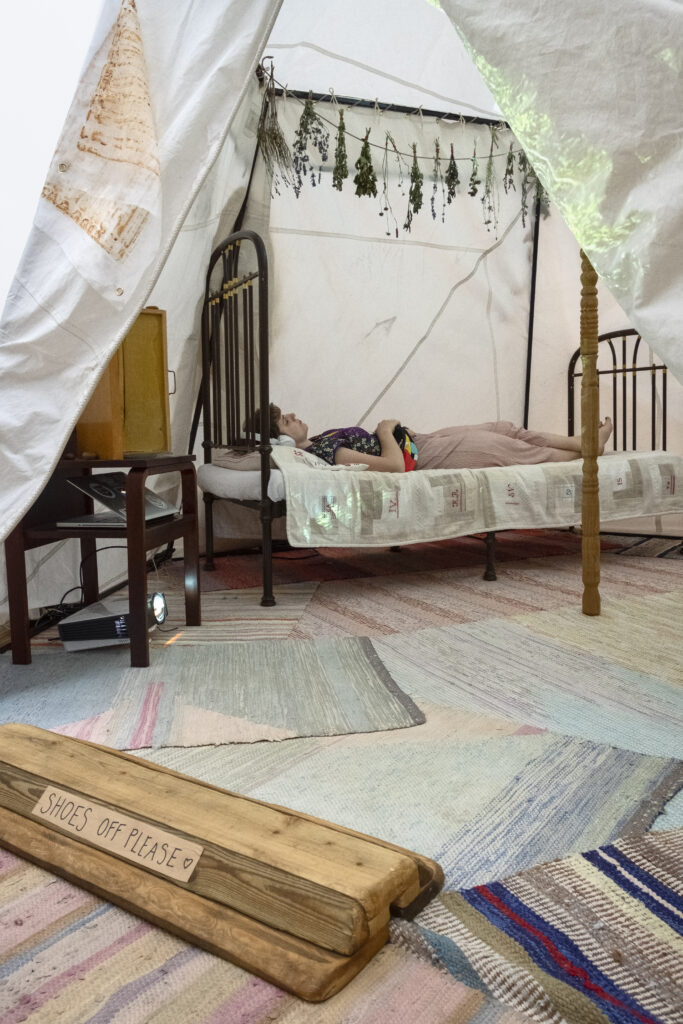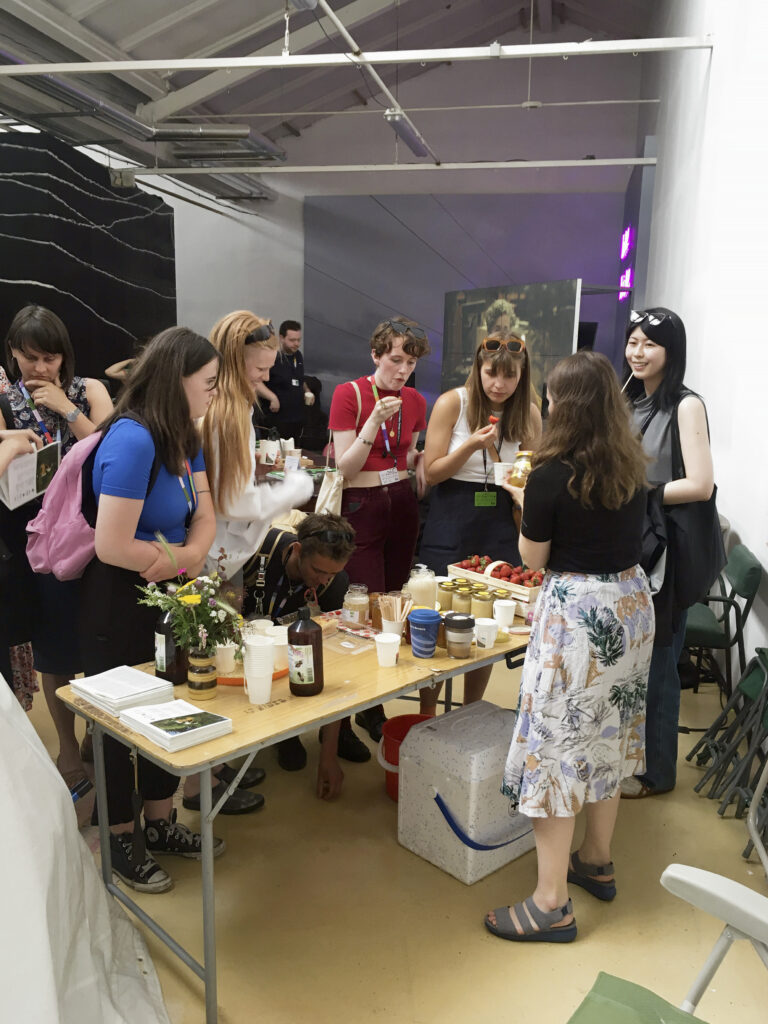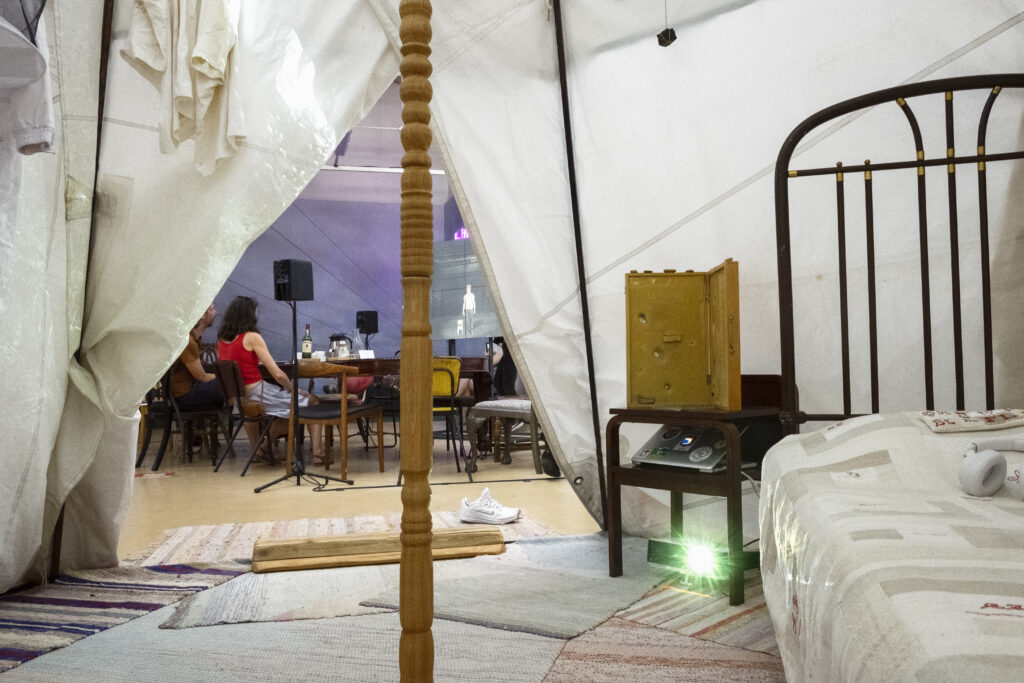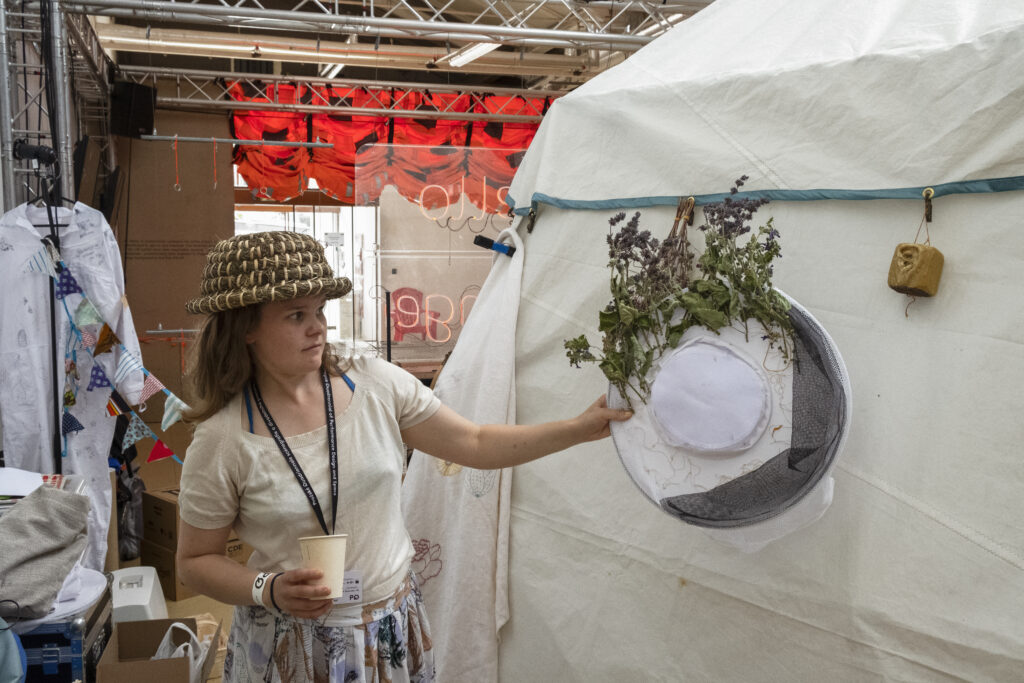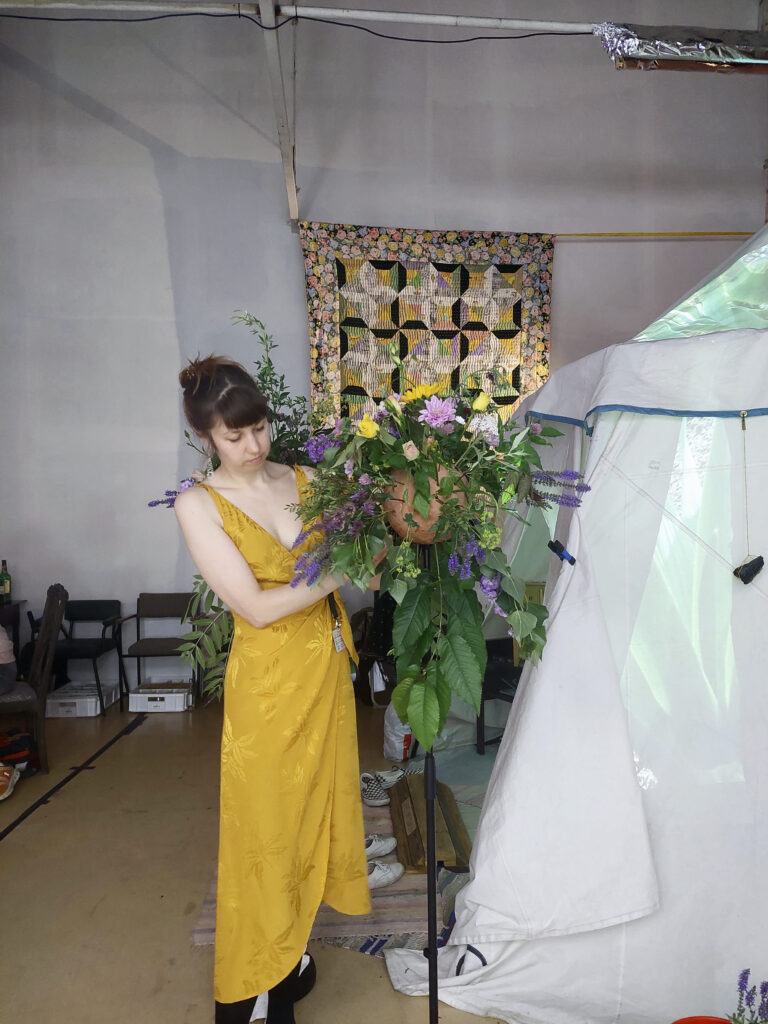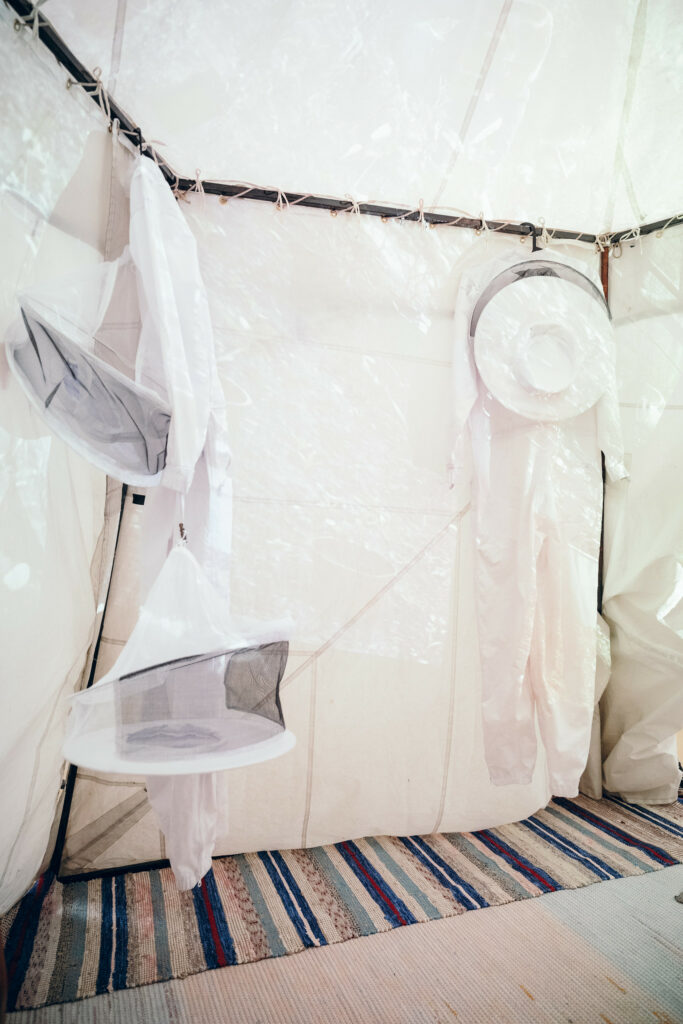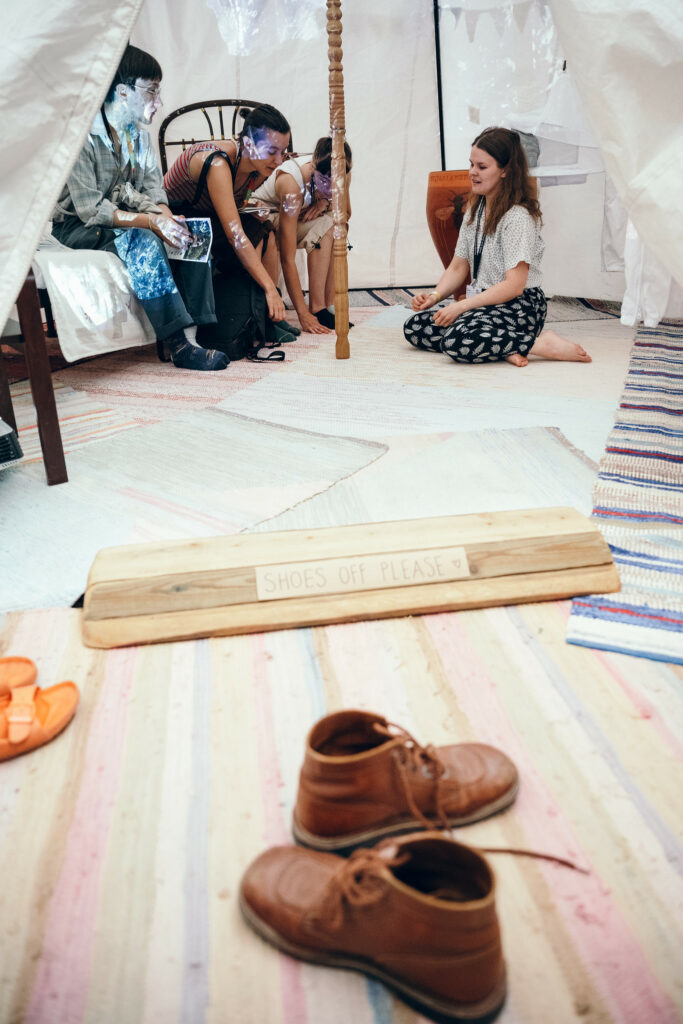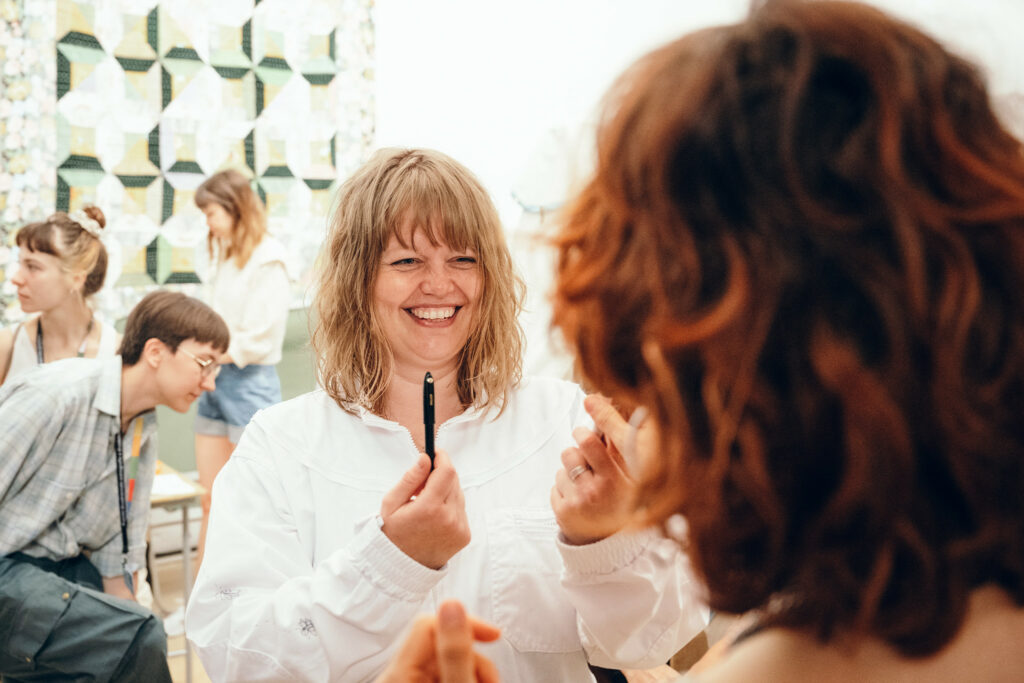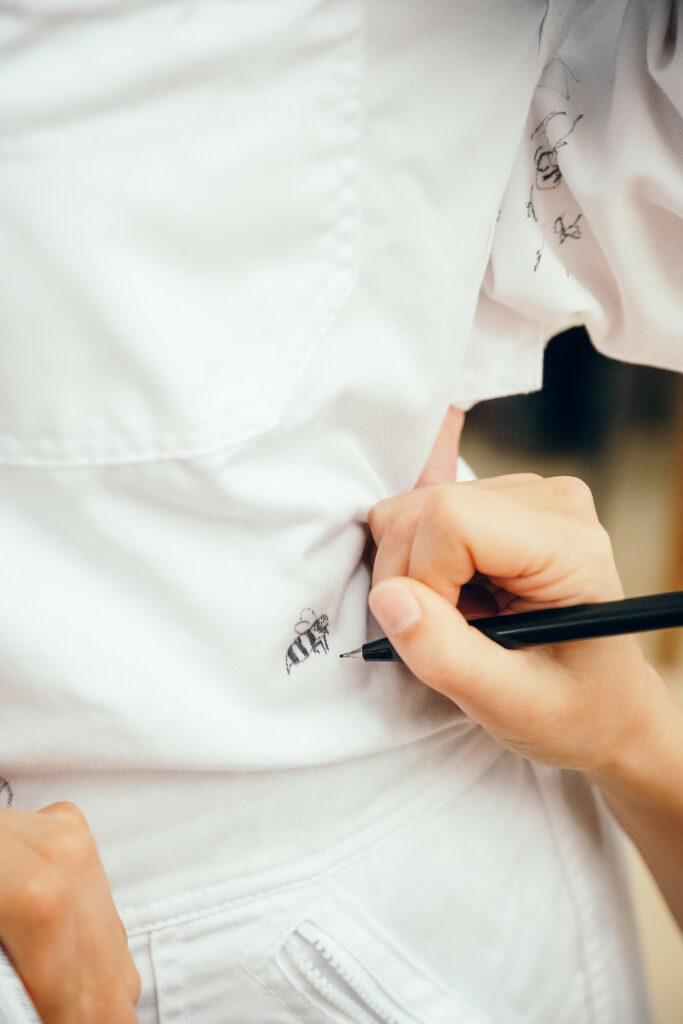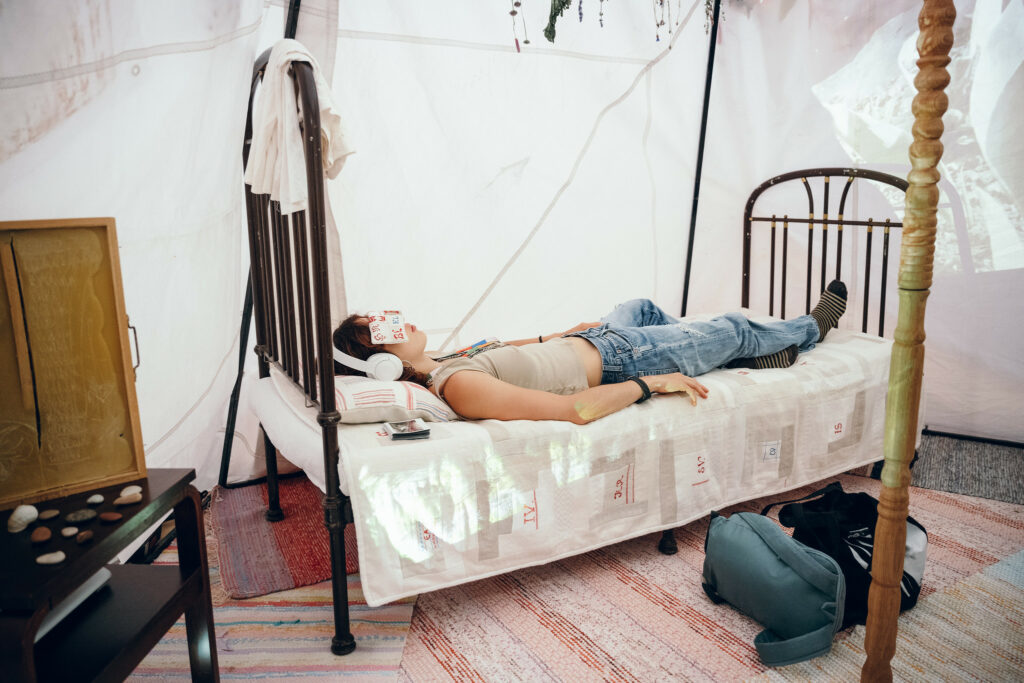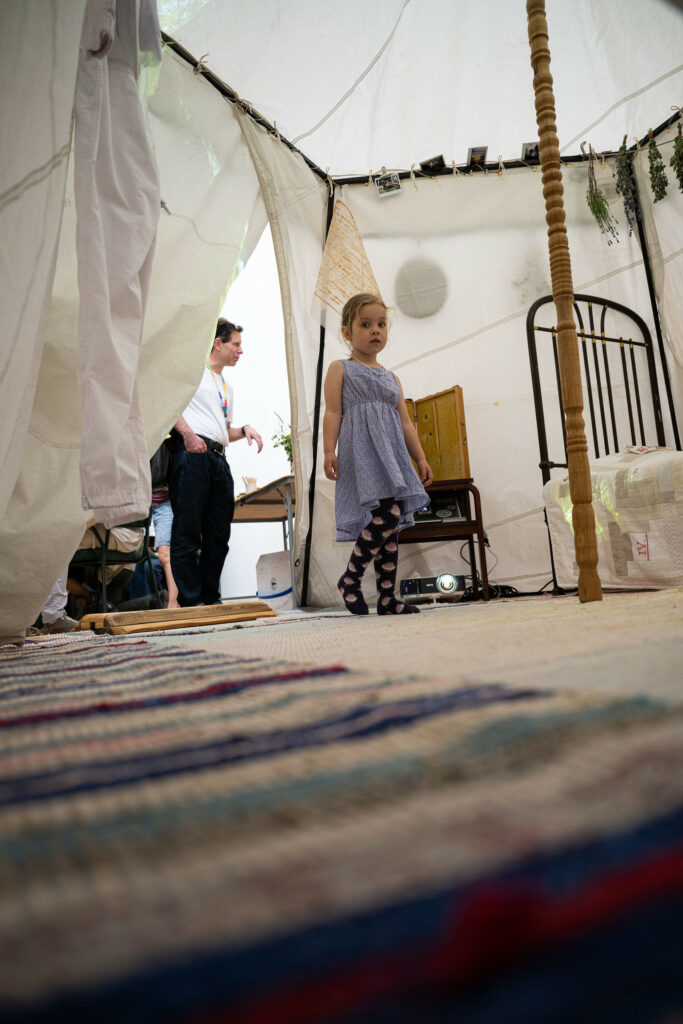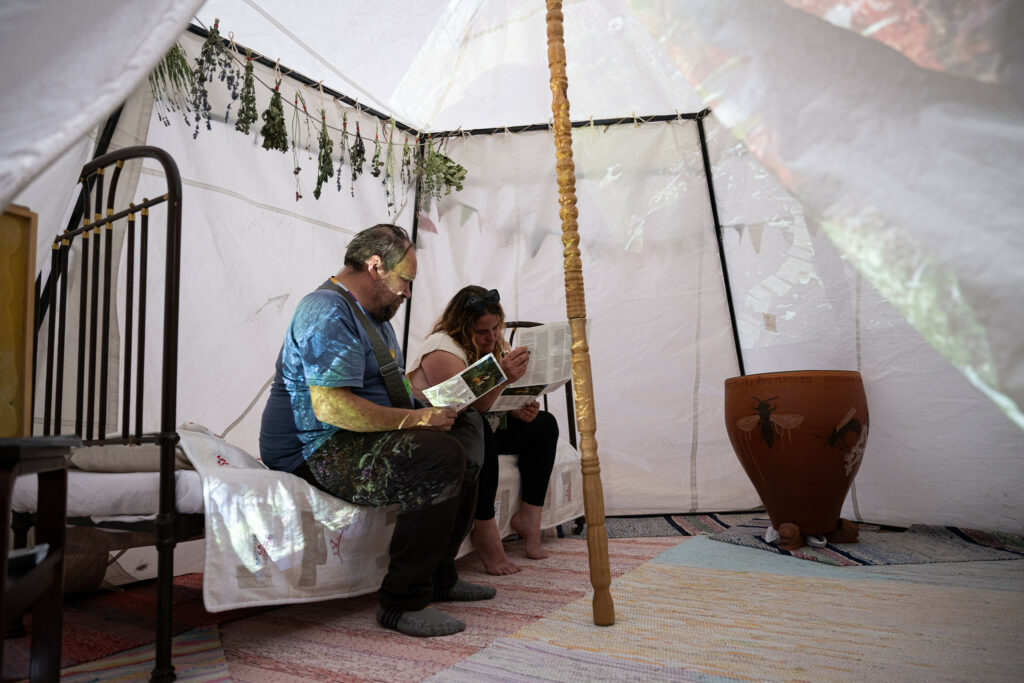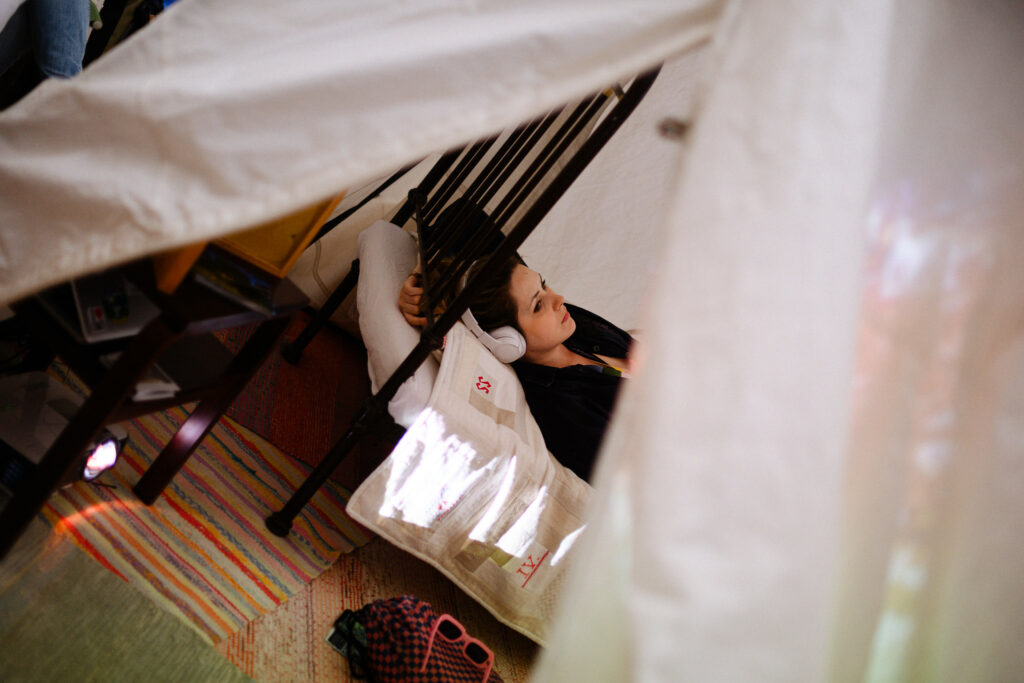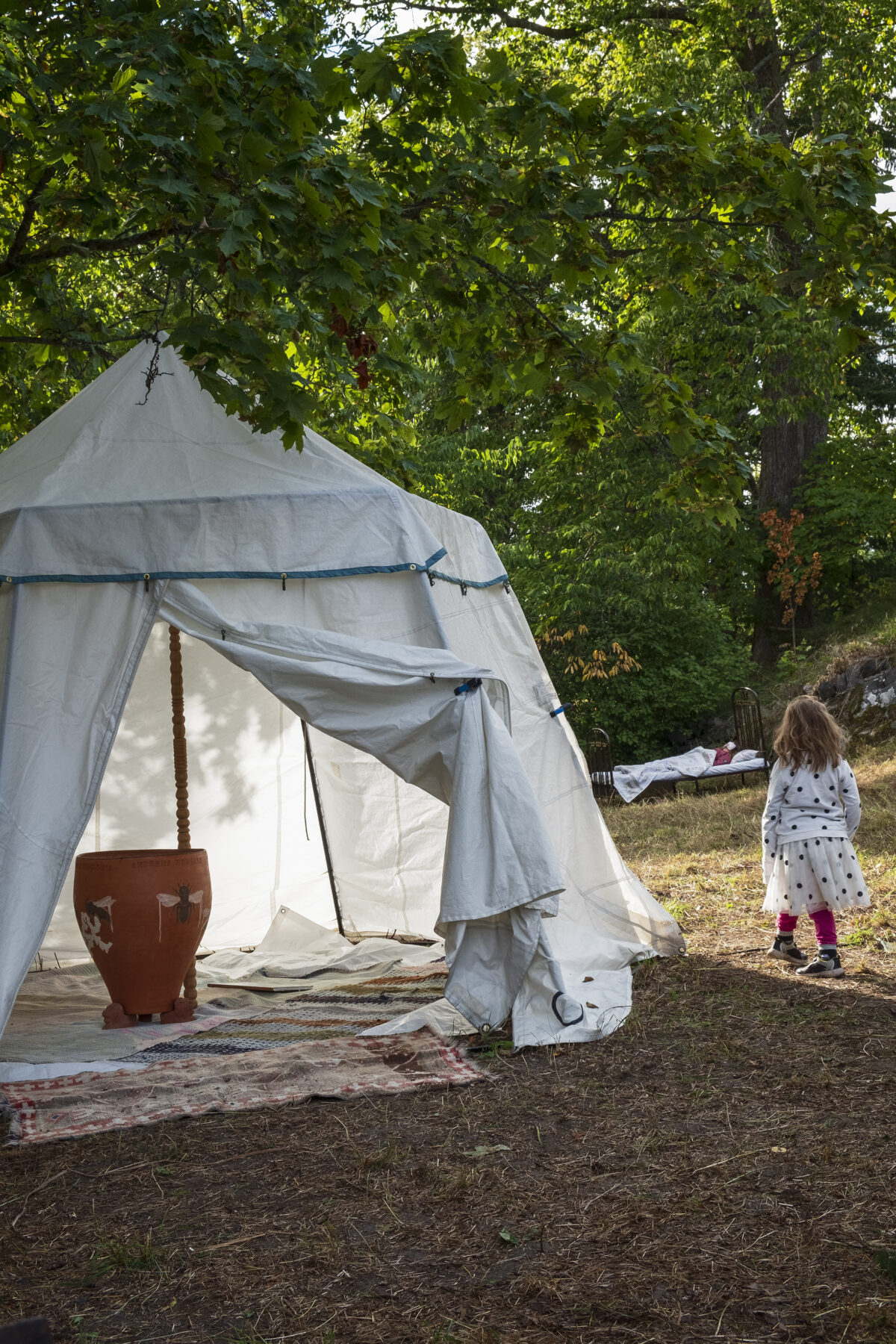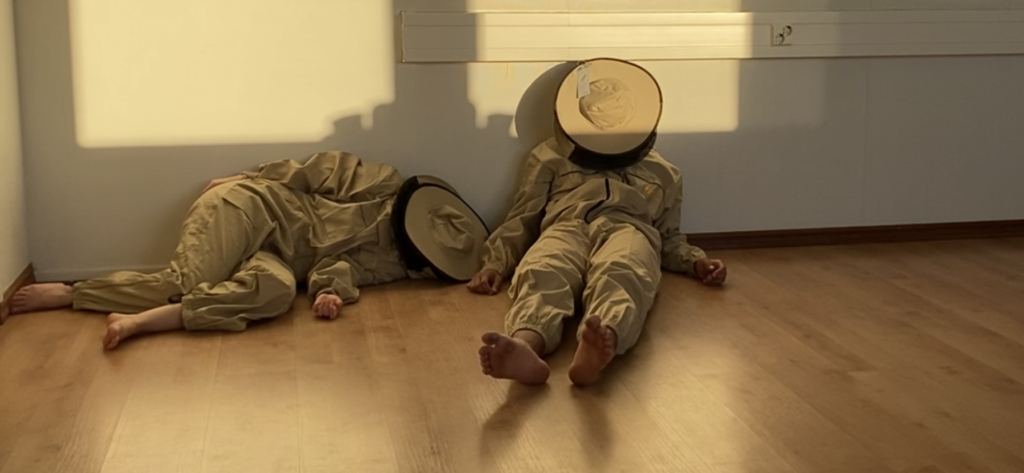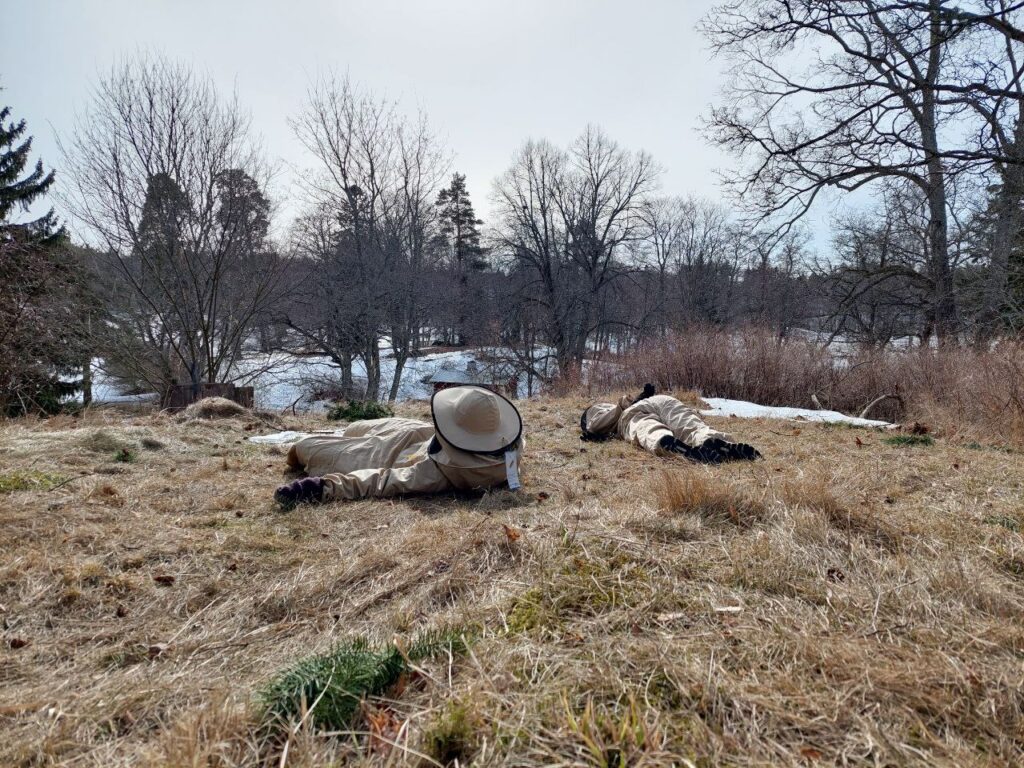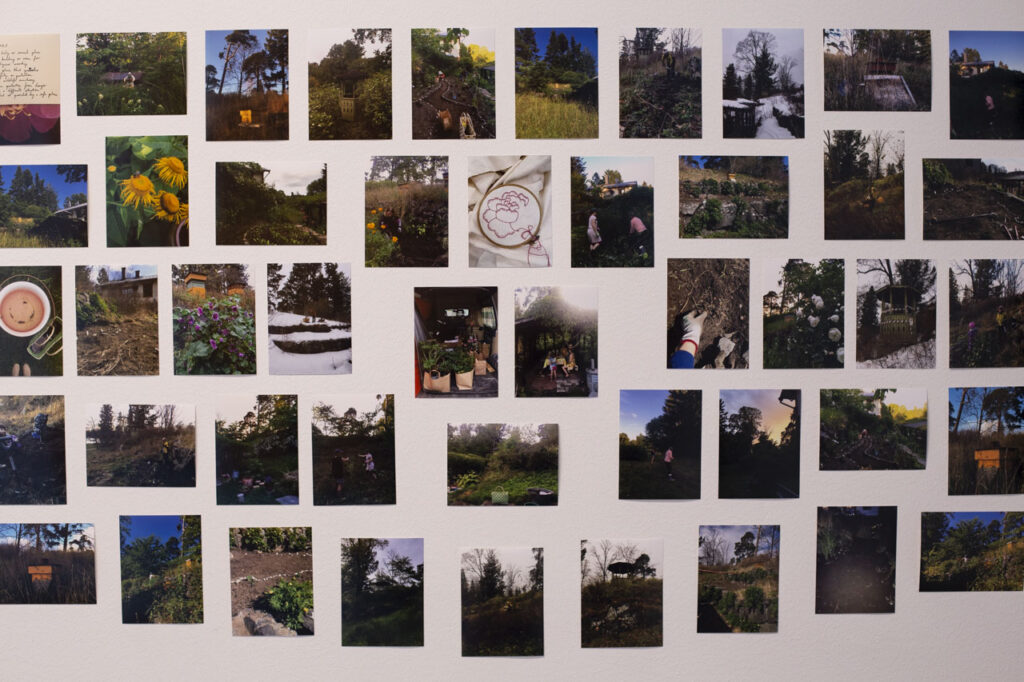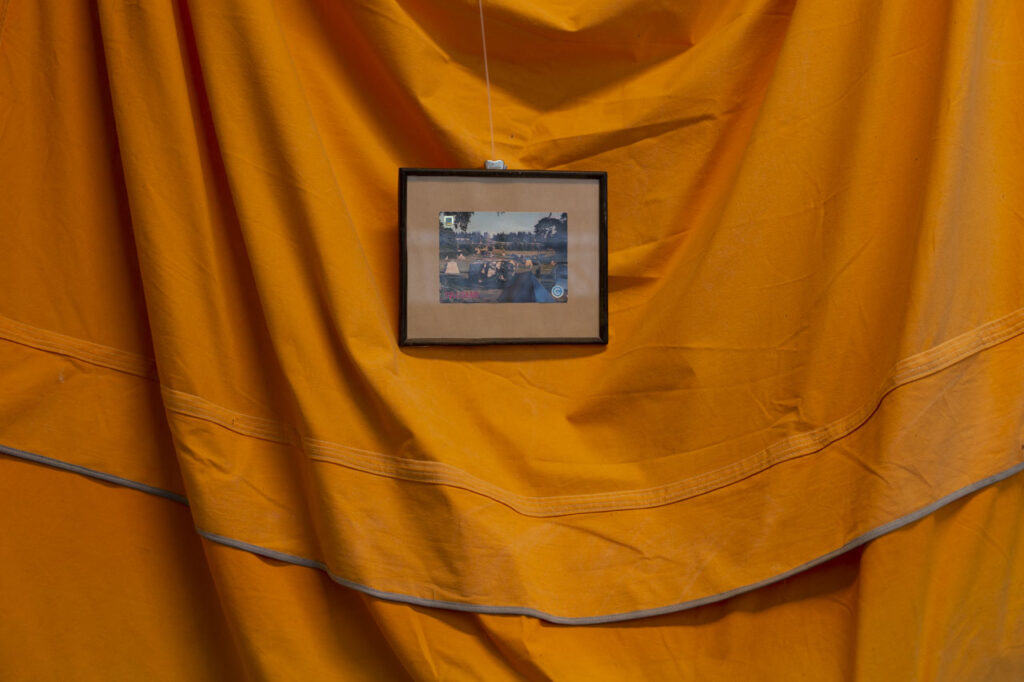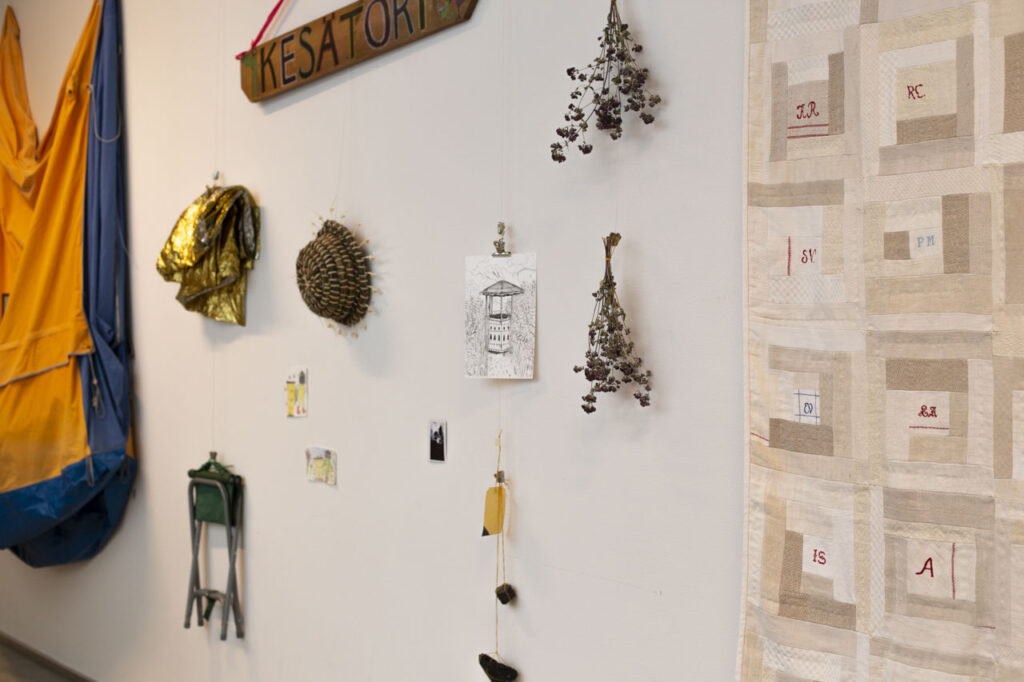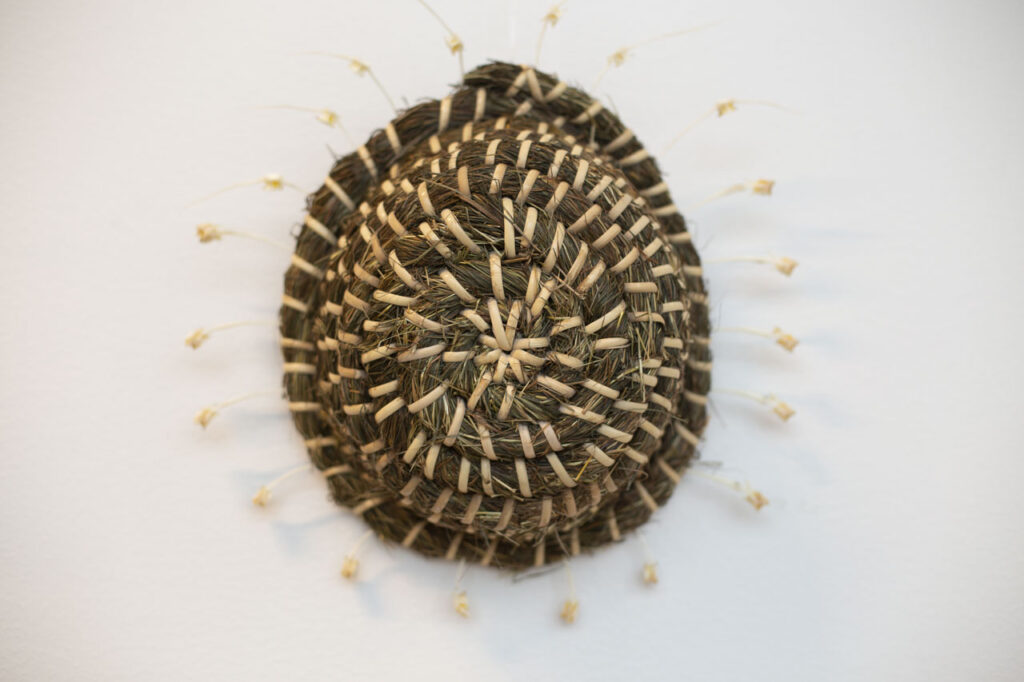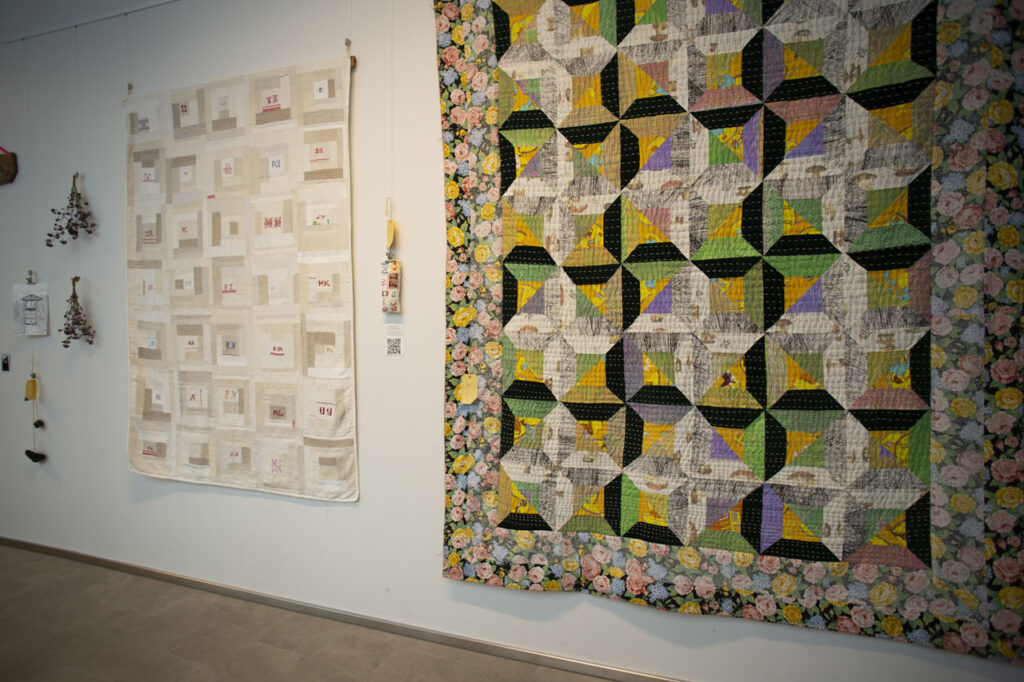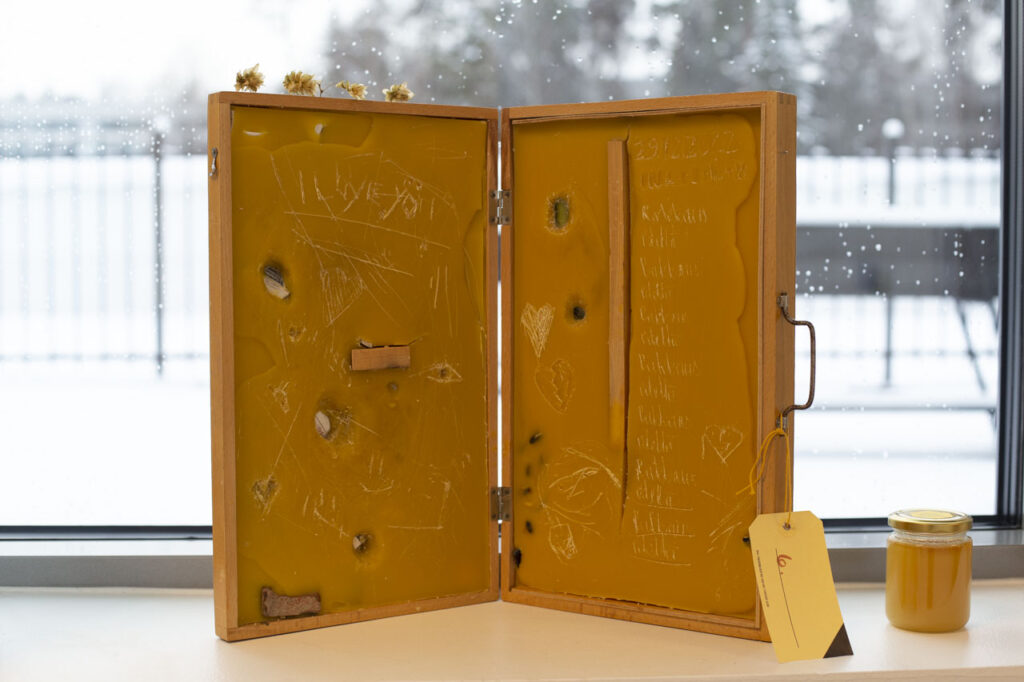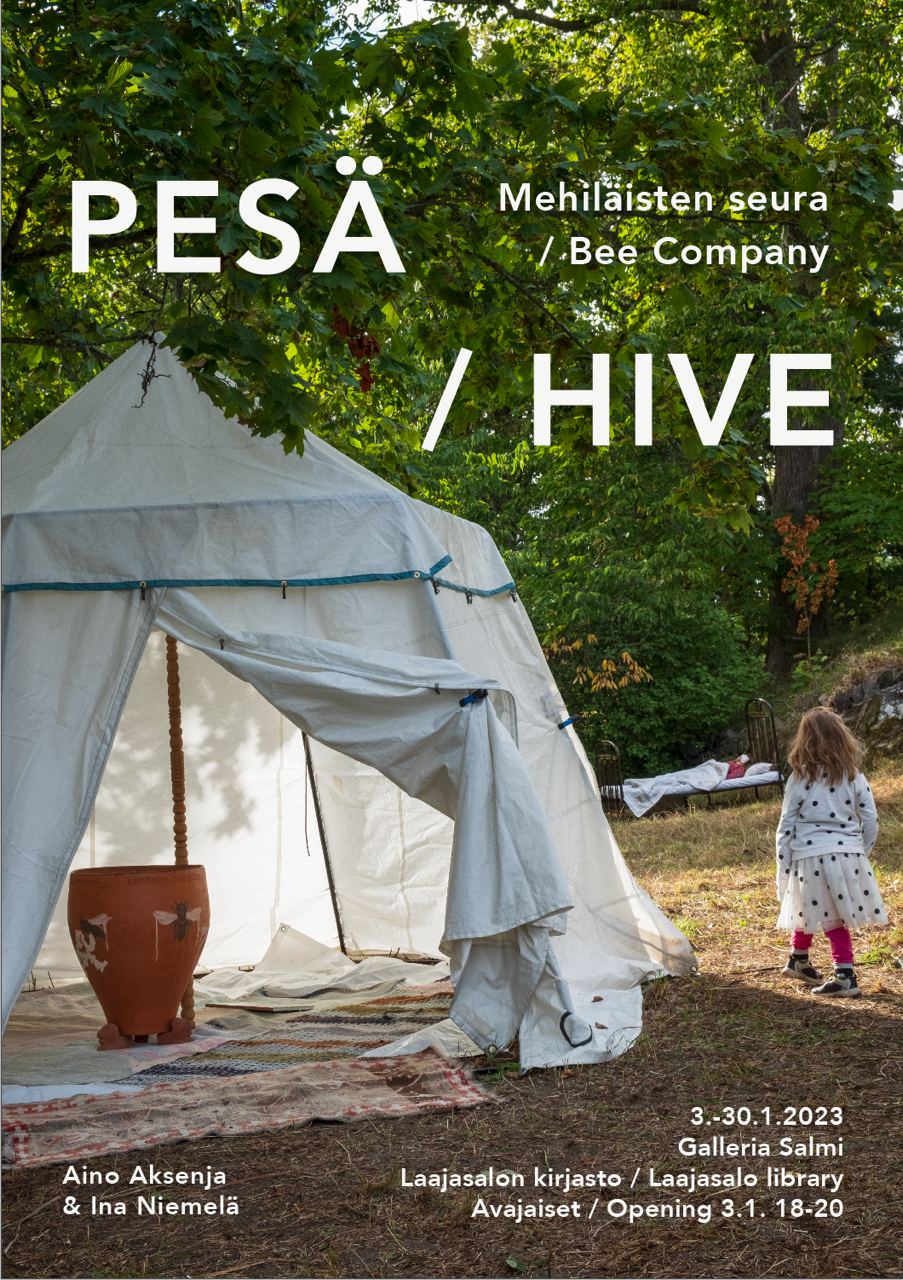Teoksen syntyprosessista (faktaan perustuvaa fiktiota):
Olipa kerran muuan teollisuuden harjoittaja Henrik Borgström, kotoisin Porvoosta ja opiskellut Liverpoolissa, joka omisti Tullisaaren kartanon Helsingin saaristossa. Elettiin 1800-luvun loppua, jolloin Helsinkiin rakennettiin tehtaita ja kerrostaloja päätähuimaavaa vauhtia. Silloin ei vielä ollut nykyisenkaltaisia nostureita tai hissejä, joten rakentamisen tahti taisi siltikin olla hitaampaa kuin tulevina vuosisatoina. Kallioita oli jo opittu räjäyttämään ja järviä täyttämään.
Henrikin intohimona olivat puistot ja maisemat, ja koska hän oli rikas mies, teki hän Tullisaaresta Helsingin hienoimman kartanonpuiston. Saadakseen Euroopan parhaimman puutarhurin töihin itselleen, hän rakennutti puistoon tälle talon. Talon pihapiiriin sijoitettiin huvimaja. Oliko huvimaja tarkoitettu puutarhurille ja hänen vierailleen vai Borgströmin omiin huvituksiin jäänee arvoitukseksi. Tällaisista yksityiskohdista harvoin jää merkintöjä historiankirjoihin.
2000-luvun alussa 14-vuotiaat taiteilijanalut Aino ja Ina tutustuivat Porvoon taidekoulussa ja seuraavat kaksikymmentä vuotta he elivät tietämättä mitään siitä, että tuo huvimaja tulisi muovaamaan heidän käsityksiään, ajatteluaan ja mikä hauskinta, että sen avulla he voisivat matkustaa ja elää ihanaa elämää. Mitä oli mahtanut tapahtua, että tuo pieni huvittelua sekä eurooppalaisia ihanteita ja sivistystä heijasteleva maja oli saanut sellaiset voimat? He aavistivat jo ensinäkemältä, että huvimajan ylle oli langetettu kirous ja että oli lausuttava 8 loitsua ja uurastettava 8 kesää, mutta lopulta se palkitsisi heidät ruhtinaallisesti.
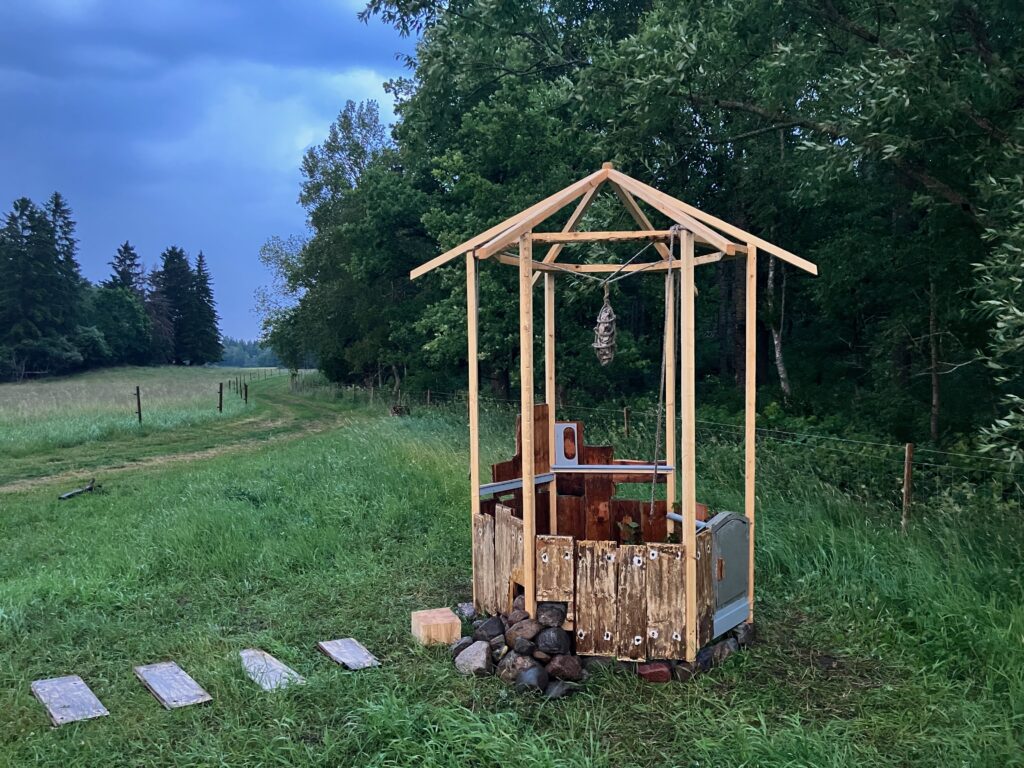
Samalla vuosituhannella puutarhurin taloa, tai puutarhurin mökkiä kuten sitä silloin kutsuttiin asutti vanha savenvalaja, joka oli koristellut puutarhan isoilla itse tekemillään ruukuilla. Eräänä päivänä matkalla kauppakeskukseen hän puhutteli mehiläistenhoitajaksi ryhtynyttä Inaa, jonka toimia oli koko kesän seurannut. “Hei, asun tässä puistossa. Tuo tuo sinun pesäsi minun puutarhaani. Se on mehiläisille paljon parempi paikka.” Ja näin tapahtui. Syksyn kääntyessä talveksi pesä muutti puutarhurin mökin pihaan ja samalla taianomaisen huvimajan vaikutuspiiriin.
Ina, Aino ja savenvalaja alkoivat kutsuaan itseään nimellä Mehiläisten seura. Eräänä keväänä he tekivät matkan hienoon kartanoon maan toisella laidalla. Mukaan seuraan oli kutsuttu myös norjalainen tutkija ja mystikko Ingvill. Tuo kartano oli aikansa merkittävimpiä taiteilijaresidenssejä, sillä se oli yksi harvoista maailmassa, joka tarjosi vierailleen täyden ylläpidon ja rauhan tehdä taidetta, joillekin jopa useiden kuukausien ajaksi. Matkallaan heille selvisi, että myös tässä kartanossa oli ollut huvimaja, iso kahdeksankulmainen paviljonki järeällä kivijalalla, joka oli jossain kohtaa historiaansa muutettu kanalaksi. Kanojen ajan jälkeen huvimaja oli maatunut tai palanut ja jäljelle oli jäänyt vain kivijalka.
Vaikeiden valtakuntaa kurittaneiden pandemiavuosien jälkeen Saaren kartanon taiteilijaresidenssi, joksi tuota kartanoa kutsuttiin, eli uutta yhteisöllisyyden aikaa. Siellä järjestettiin juhlia, kokoonnuttiin ja syvennyttiin taiteen tekemiseen, siitäkin huolimatta että maata hallitsivat taiteilijoita halveksivat ilkeät johtajat. He varastivat taiteilijoiden juonet ja keinot ja ottivat ne surutta omaan käyttöönsä. Valtakunnan henkisestä taantumuksesta ja moraalisesta rappiosta huolimatta Saaren kartano kutsui Mehiläisten seuran taiteilemaan näyttelyn maankuululle Kulttuuripolulle. Seura aloitti viipymättä Tullisaarta ja Saaren kartanoa yhdistävien salakäytävien etsinnät. Tätä kysymystä he kuumeisesti miettivät: jos rakennamme Kulttuuripolulle huvimajan, voimmeko siirtyä sinne sekunneissa Tullisaaresta, ilmiintyä kuten fantastisen suosituissa kirjasarjassa tehdään tai matkustaa kuin unessa? He päättivät kokeilla onneaan, sillä näistä asioista on vaikea ottaa selvää, koska ne eivät ole järjen asioita.
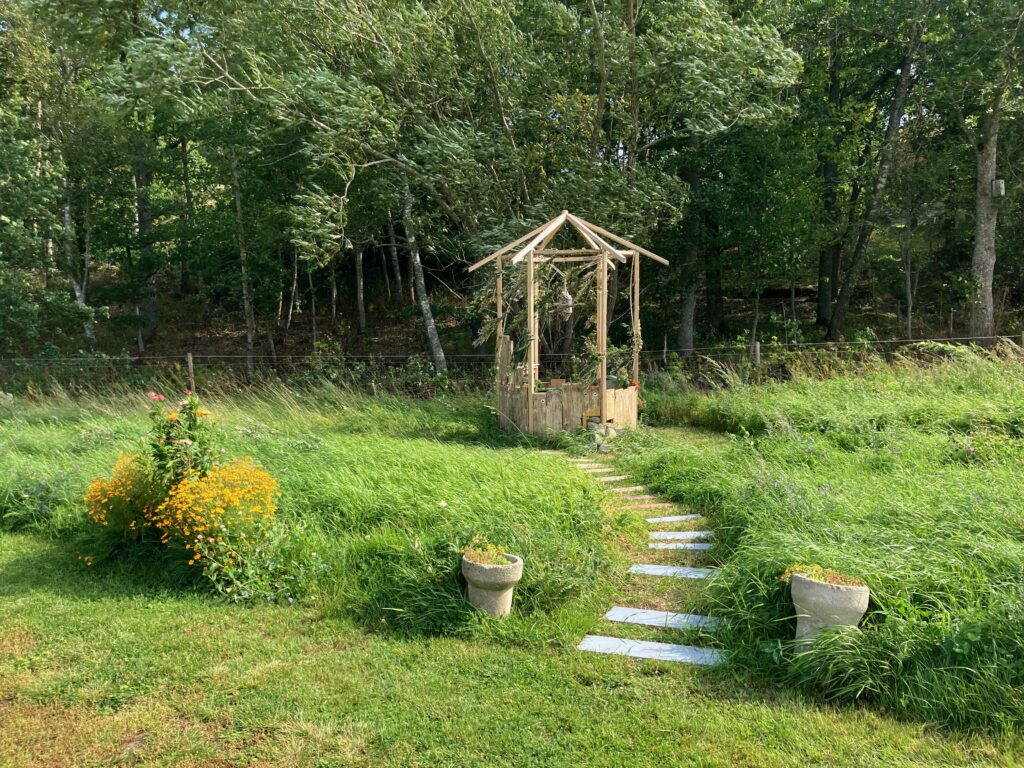
Tämäkin tarina on sepitettä, jota kirjoitan urheilukentän laidalla syyskuisena lauantaina. Tämäkin on eräänlainen kokeilu; mielikuvituksen, kynän, tyhjän ajan ja paperin aikaansaama hupsuttelu, leikki ja höpönlöpöjuttu. Eläintarhan puiston, eli tämän puiston jossa istun ja kirjoitan samalla kun seuraan lapsia kilpailemassa keihäänheitossa, suunnitteli samainen kartanonherra Borgström. Mietiskelen mistä kumpusi hänen kiinnostuksensa kasveihin ja maisemiin? Oliko se hänen tapansa ilmaista itseään vai oliko hän huolissaan puiden elintilan katoamisesta teollistuvassa ja kasvavassa Helsingissä? Teollisuusmiehenä hän varmastikin tiesi millaista tuhoa ihminen kasvukiimassaan saisi aikaan.
Auringossa on todella kuuma, edelleen shortsikelit. Ajattelen Maljojen kolmosta Kulttuuripolulla enkä voi enää itsekään uskoa, että se on meidän, Mehiläisten seuran, tekemä. Nyt on jo syksy, vaikkakin lämmin sellainen, ja kesän leikit on leikitty. Saaren kartano pitää teoksesta huolta, eikä meitä kuulemma enää tarvita. Huvimaja olisi ollut hyvä nimi tai vaikka Taikakaivo tai Sumulinna, miksei yhtä hyvin Hietamäen helmi tai Tuulinen sydän. Mutta teoksen nimi on Maljojen kolmonen eikä se voisi mikään muu ollakaan.
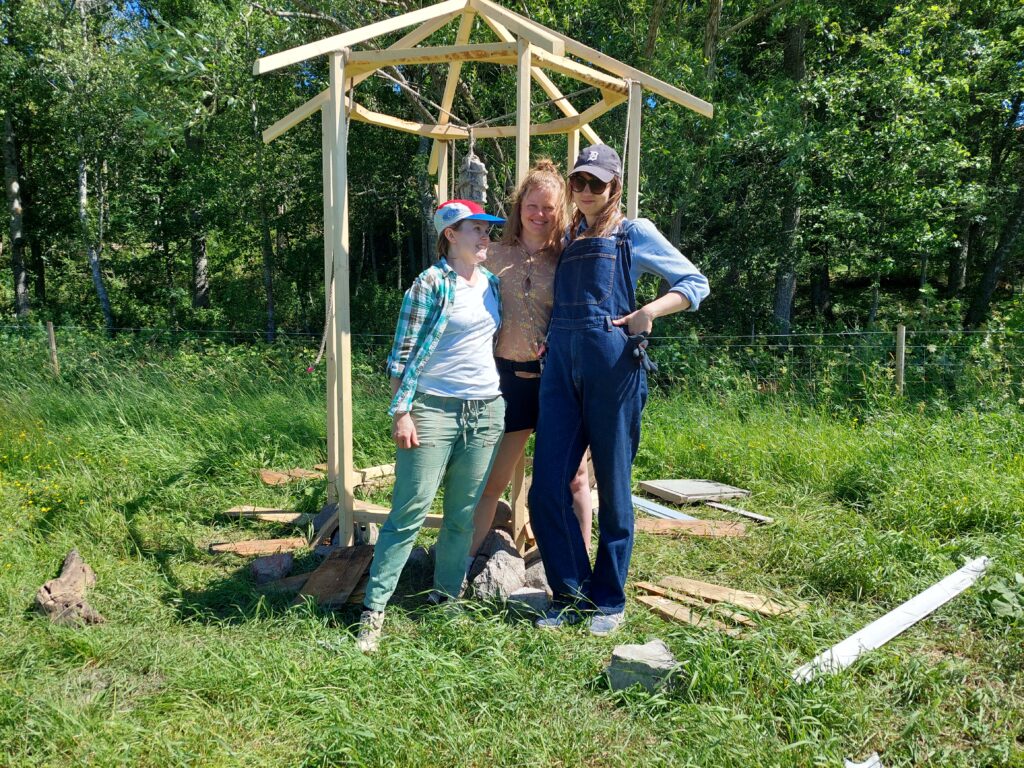
Taustaa (faktaa):
Maljojen kolmonen sai alkunsa tammikuussa 2024, kun Ida Enegren Saaren kartanolta otti yhteyttä Mehiläisten seuraan ja pyysi meitä tekemään Kulttuuripolku-näyttelyn vuosille 2024-2025. Polun pääteokseksi ryhdyimme suunnittelemaan huvimajaa, joka prosessin aikana muuttui kaivoksi. Se piirrettiin samankokoiseksi kuin sisarensa, huvimaja Tullisaaren kartanopuistossa jossa pidämme sydänmajaamme, mutta muodoksi tuli kahdeksankulmion sijaan sekä mehiläispesistä että seuran aiemmista teoksista tuttu kuusikulmio. Teos suunniteltiin keväällä ja toteutettiin pääosin kesäkuussa 2024, jolloin Ina, Aino ja Ingvill viettivät viikon Saaressa rakentaen teosta paikallisesti hankituista ja kierrätysmateriaaleista. Tullisaaren kartanon ja Saaren kartanon historioiden yhteensolmimiseksi meidän oli tarkoitus polttaa huvimaja rituaalisesti. Kuivien touko- ja kesäkuun aikana tuli muuttui vedeksi, synnyttäen uusia rituaaleja. Maljojen kolmonen avattiin seremoniallisesti kartanon Elojuhlassa elokuussa 2024.
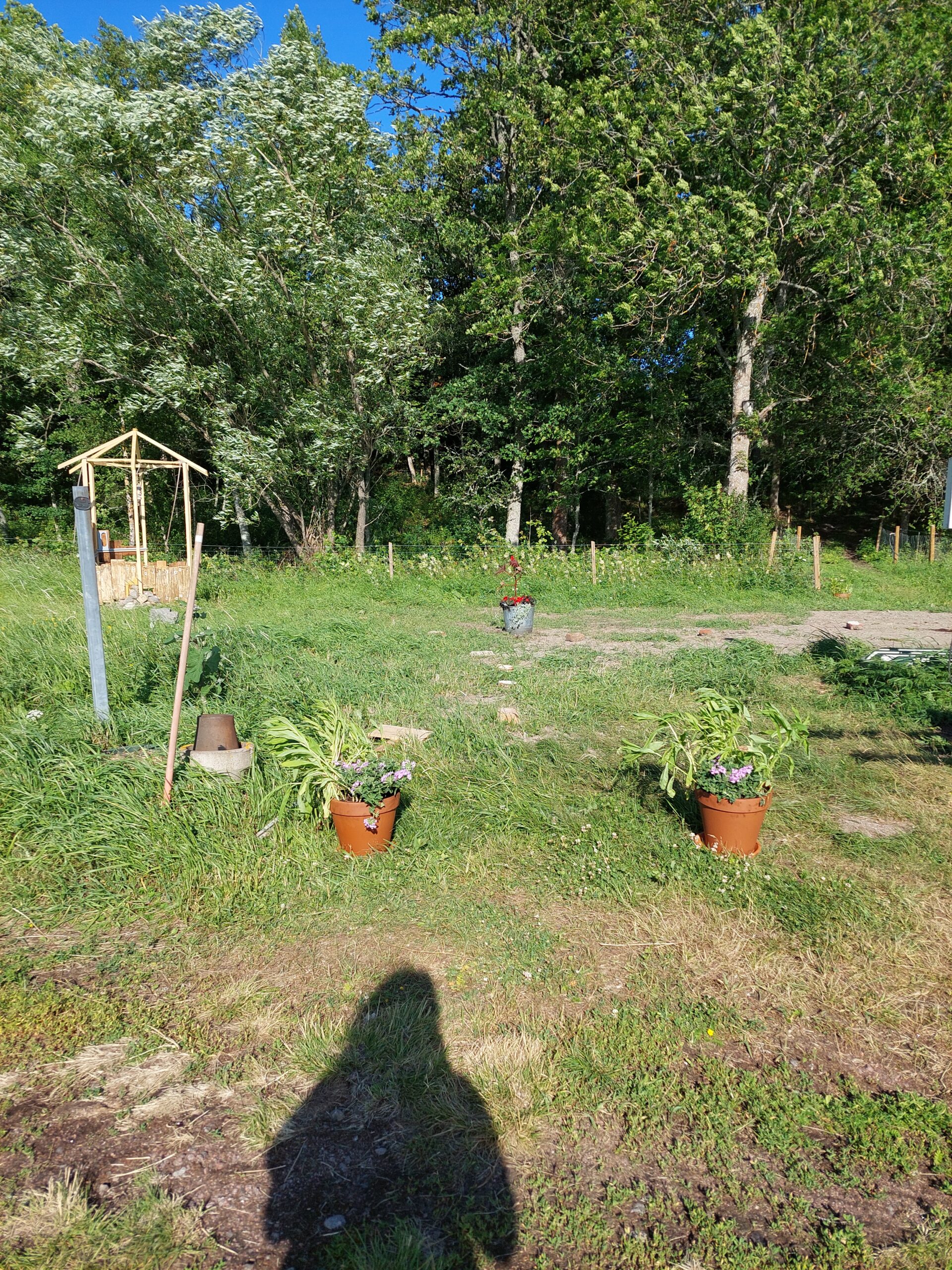
Hoito-ohje:
Maljojen kolmosen huvimaja/kaivo: Majaa ei tarvitse varsinaisesti huoltaa, se on tehty kestämään säätä ja elämään sen mukana, mutta teosta seurataan ja jos ilmenee poikkeavia muutoksia tai korjattavaa, otetaan yhteys Mehiläisten seuraan. Majan sisällä oleva ruukku kastellaan samalla kun polun varren ja puutarhan ruukut, ja lisäksi täytetään samalla majan sisällä oleva vesiallas. Huvimajan sisällä maassa olevat kasvit saavat kasvaa vapaasti. Ruukun köynnöskasvit saavat kietoutua majan rakenteiden ympärille. Jos huvimajan kurkistusluukku on jäänyt auki, se suljetaan.
Lisätietoa: Maljojen kolmonen on vuodenkierron mukana elävä, paikkasidonnainen installaatio. Se koostuu pääosin kierrätetystä puumateriaalista valmistetusta “huvimajasta”/ “kaivosta” ja sen ympärille kierrätysmateriaaleista, ruukuista ja erilaisista kasveista rakennetusta “muotopuutarhasta”. Kasvit on hankittu pääosin paikallisilta puutarhoilta (Pyheen kesätorin kautta) ja esikasvatettu Saaren kartanossa Heidin ja Janin toimesta. Teoksessa käytetty kierrätysmateriaali on Saaren kartanon remontista ylijäänyttä puutavaraa ja kartanon alueelta löytynyttä kivi- ja puumateriaalia. Installaatio on Mehiläisten seuran taiteilijoiden Ina Niemelän, Aino Aksenjan ja Ingvill Fossheimin paikan päällä rakentama kesäkuun lopussa 2024. Apuna ollut Ida Enegren, Matti Hänti ja Ristimäen maarakennus.
Muotopuutarhan kasveja (epätäydellinen lista):
Istutettu 25.5.2024
Virginiantädykkeet, kurjenpolvet, rönsyakankaalit, keijunmekot, maurinkiiltomalvat, humala, mirrinminttu, kangasajuruoho (yksityinen torimyyjä), tuoksuherneet, kääpiösamettikukat, kehäkukat, kosmoskukat (Saaren kartanon Heidi Lapila ja Jani Konttila), lehtikaali (Ingvill)
Istutettu 29.6.2024
Rautayrttit (Puurin puutarha), risiini, begoniat ja pikkuvitjat (Ellän Kukka ja Taimi Ky), syysleimut, mehikasvit ja maksaruohot (yksityinen torimyyjä), kääpiösamettikukat, iso-olkikukat, tuoksuampiaisyrtit, basilikat (Saaren kartanon Heidi Lapila ja Jani Konttila), krassi, lehtikaalit, ruusupapu (Ingvill)
Maljojen kolmosen polut: Astinlautapolku niitetään tarvittaessa, jos kulutusta ei ole tarpeeksi. Polku keskiosan ruukuilta huvimajalle niitetään kuljettavaksi tarpeen mukaan. Polku kaivetulta alueelta huvimajalle niitetään vasta kun apilanurmi on saatu kasvamaan, ja sen jälkeen tarpeen mukaan. Tämän eli eteläpuolen saa myös sulkea kululta apilanurmen kasvuun lähdön ajaksi, jolloin alkuun käytössä ovat vain kaksi muuta polkua. Huvimajan edestä pidetään kasvustoa lyhyenä (niin että sitä pääsee katsomaan) kaakon ja luoteen välillä, eli kurkistusluukusta astinlautojen sivuun asti. Muuten alueen kasvillisuus saa kasvaa vapaasti.
Kyltti: pidetään puhtaana ja suoristetaan tarvittaessa.
Lisätietoa: Kyltit on käsitelty seoksella, joka on keitetty Saaren kartanon residenssissä 2021 ja koostuu Mehiläisten seuran mehiläisten mehiläisvahasta, pellavaöljyvernissasta ja puutervasta. Tätä jätimme Saareen elokuussa ja kylttiä voi tarpeen mukaan uudelleenkäsitellä.
Kukkaruukut: kastellaan vähintään kerran viikossa, sään mukaan. Ruukkujen lannoitus tarpeen mukaan (puutarhurin ammattitaidolla). Kukkaruukuista saa poistaa kuolleita kasvinosia ja pitää niitä siisteinä.
